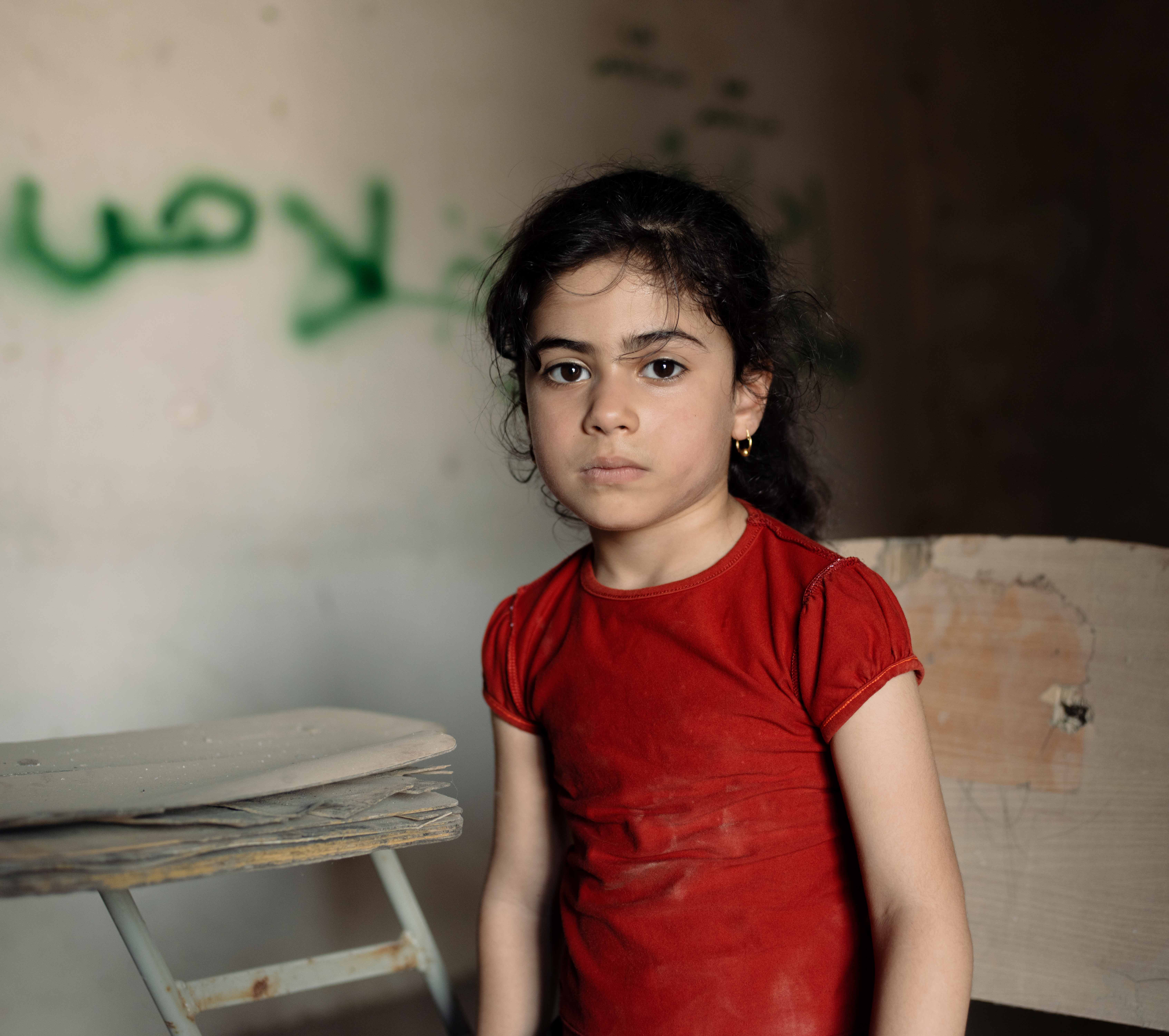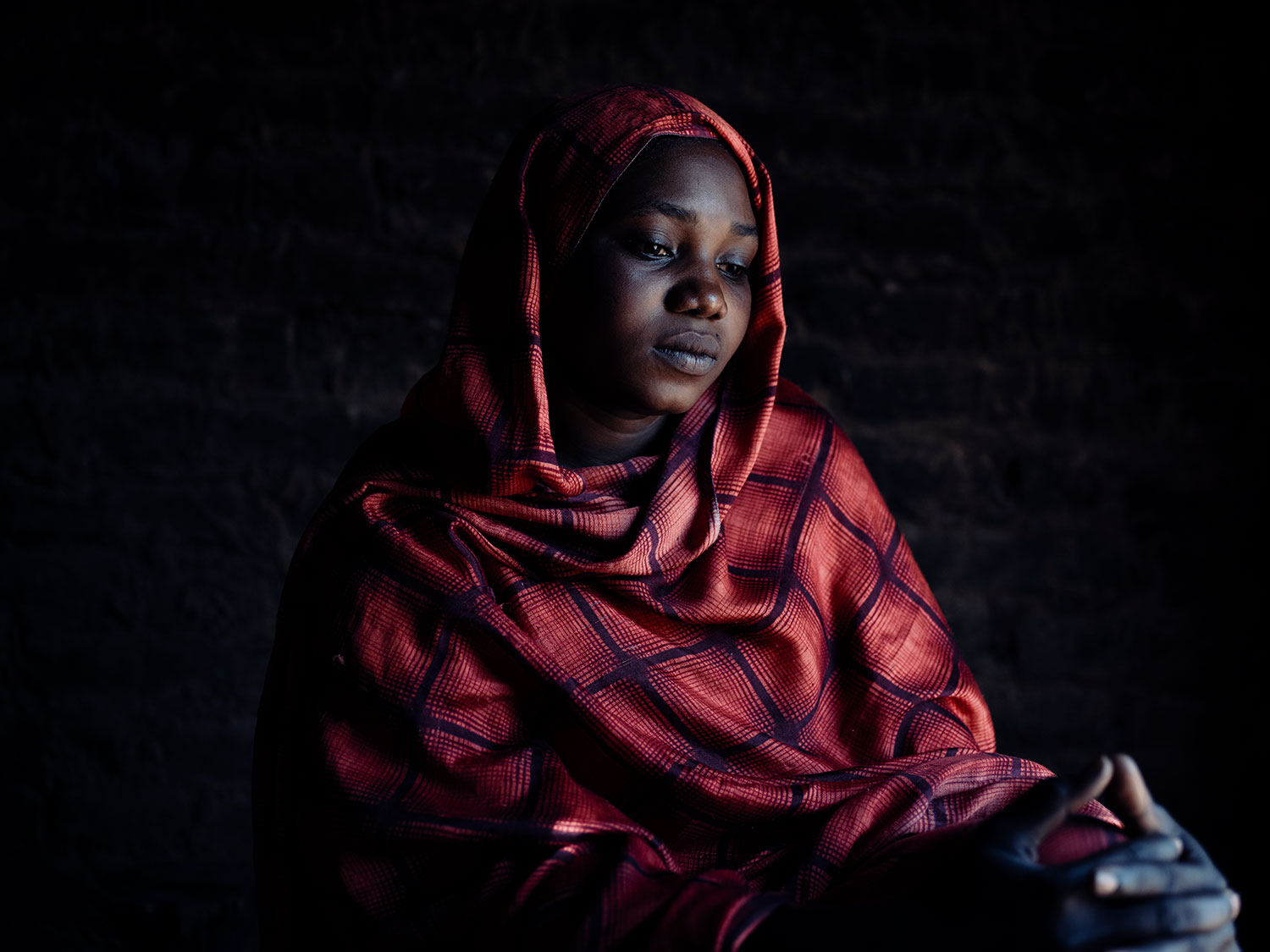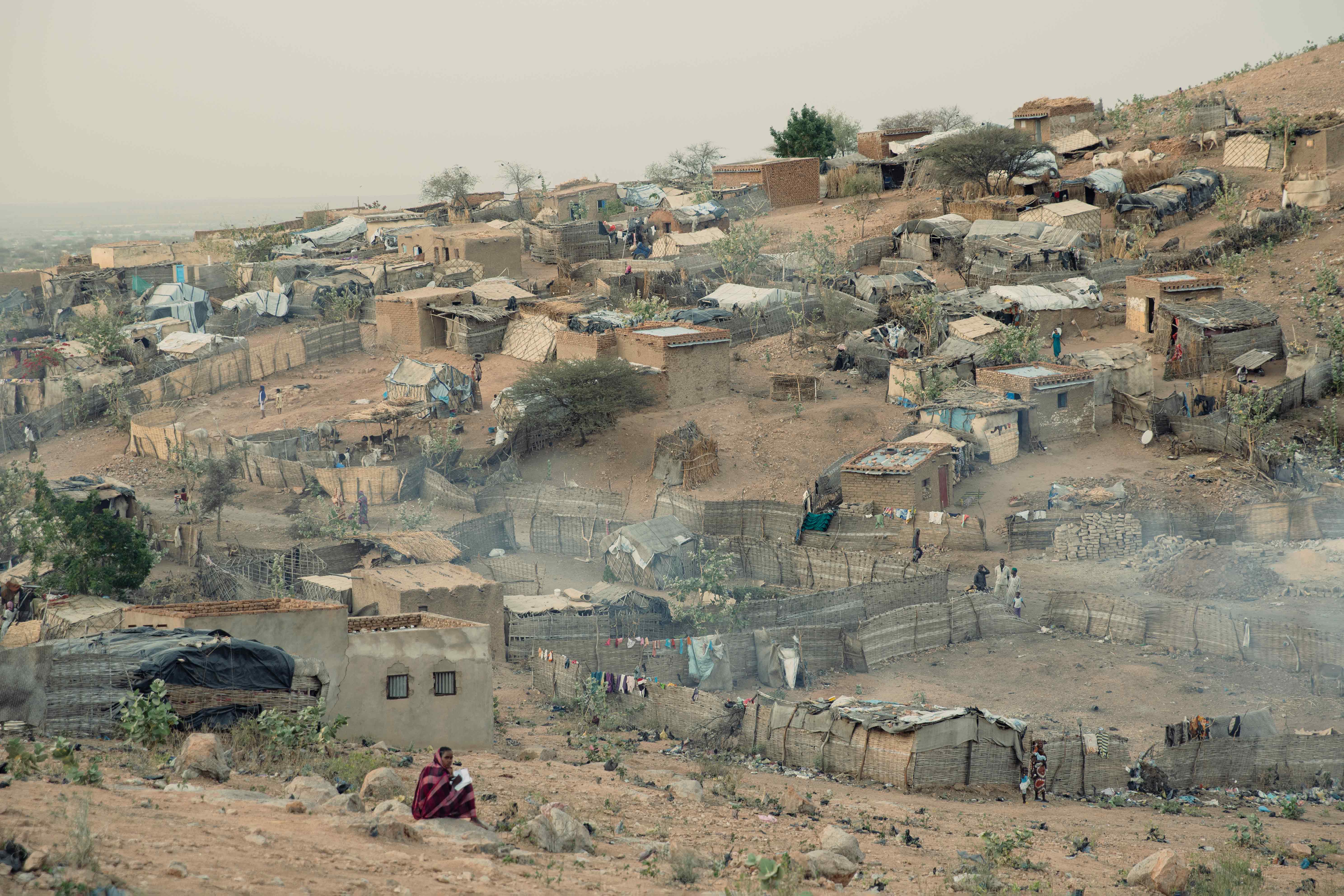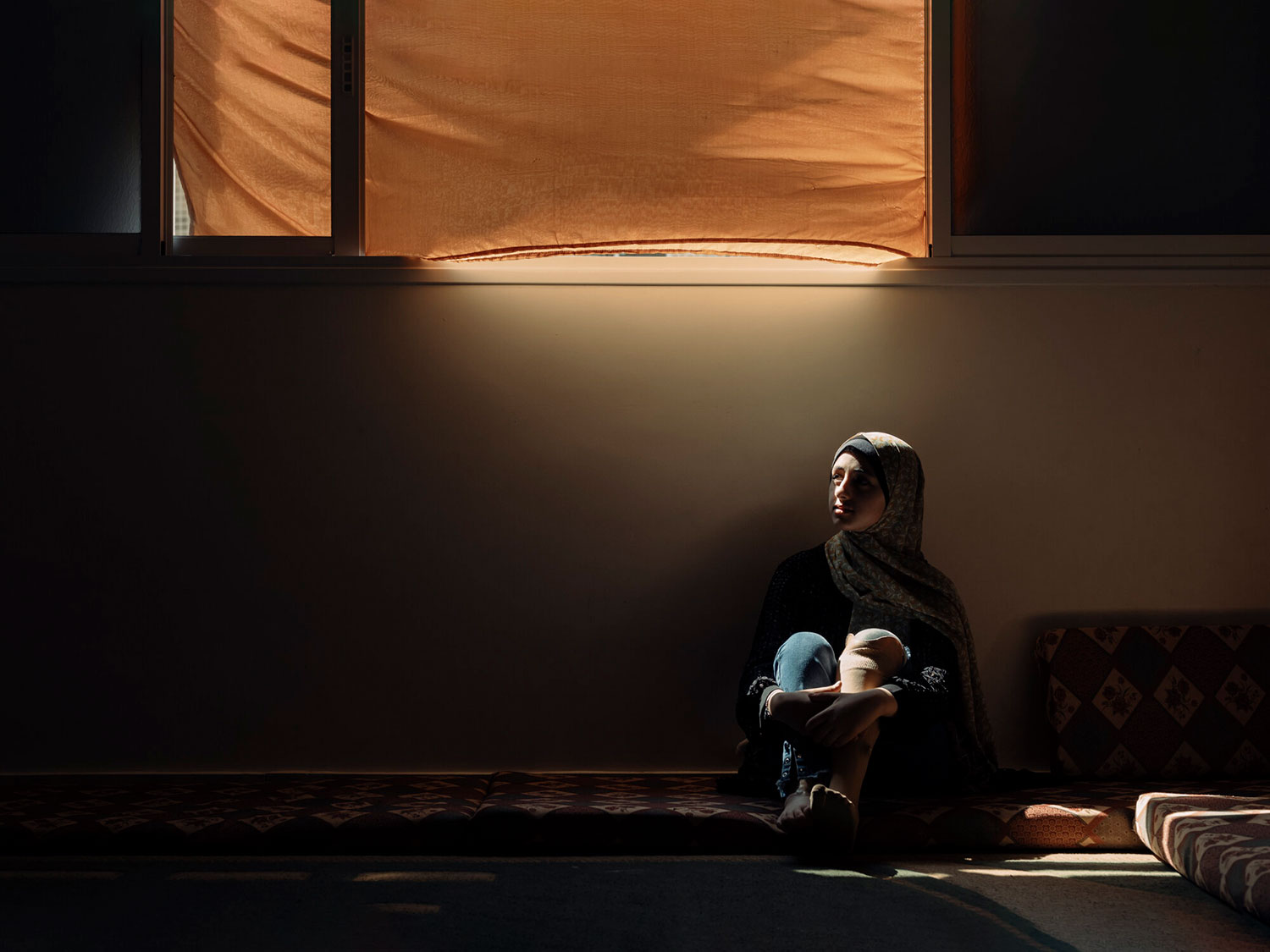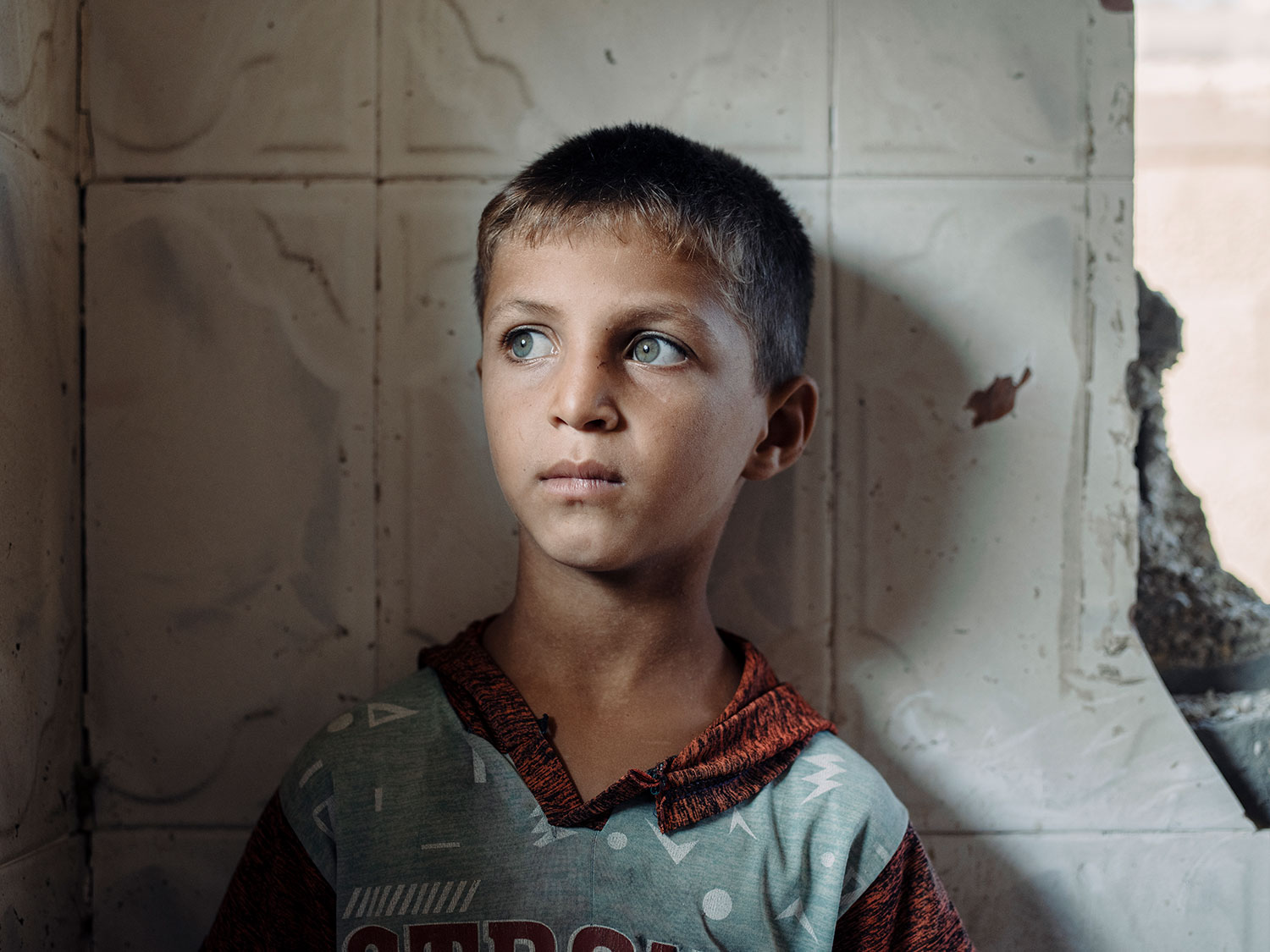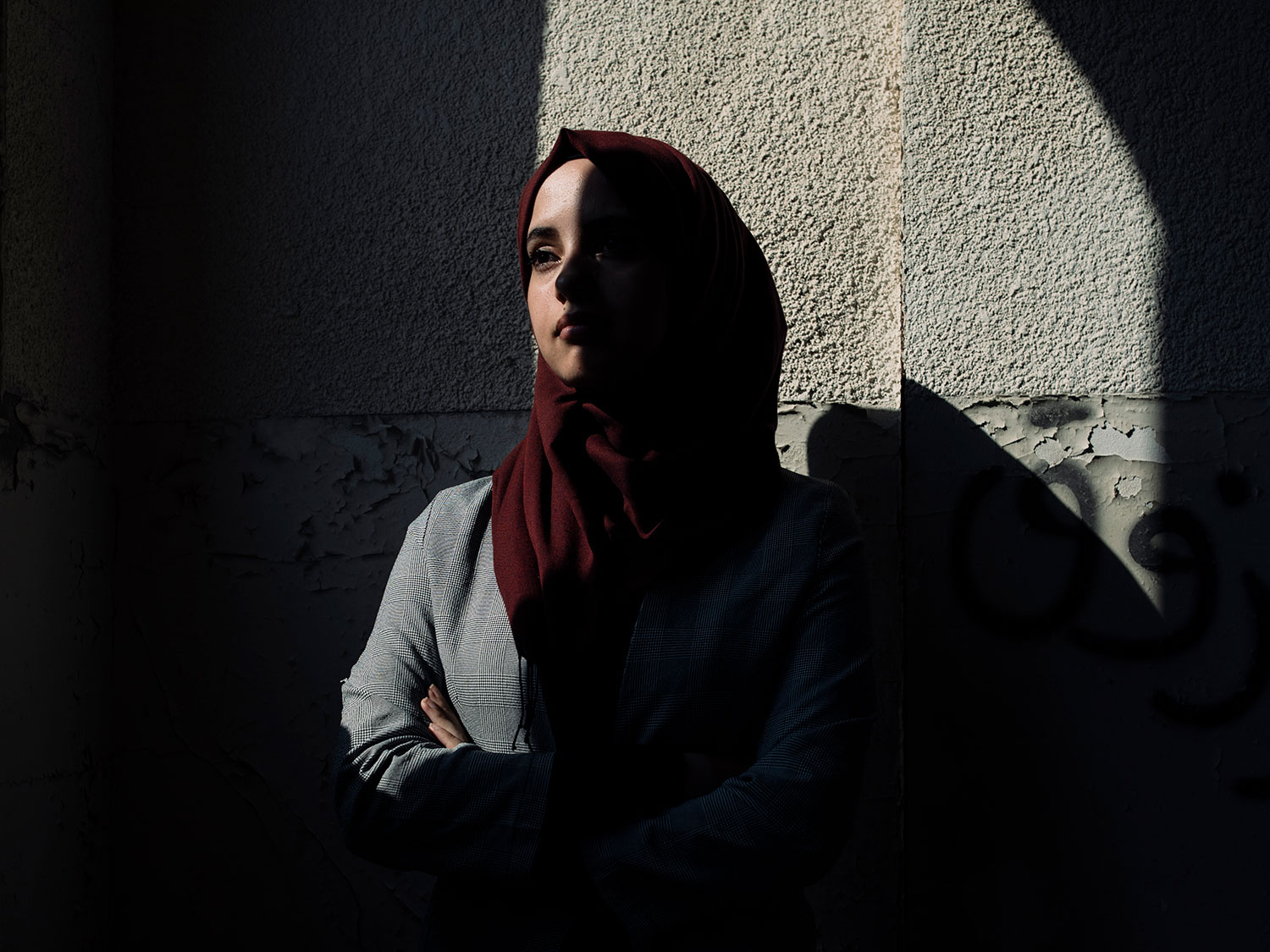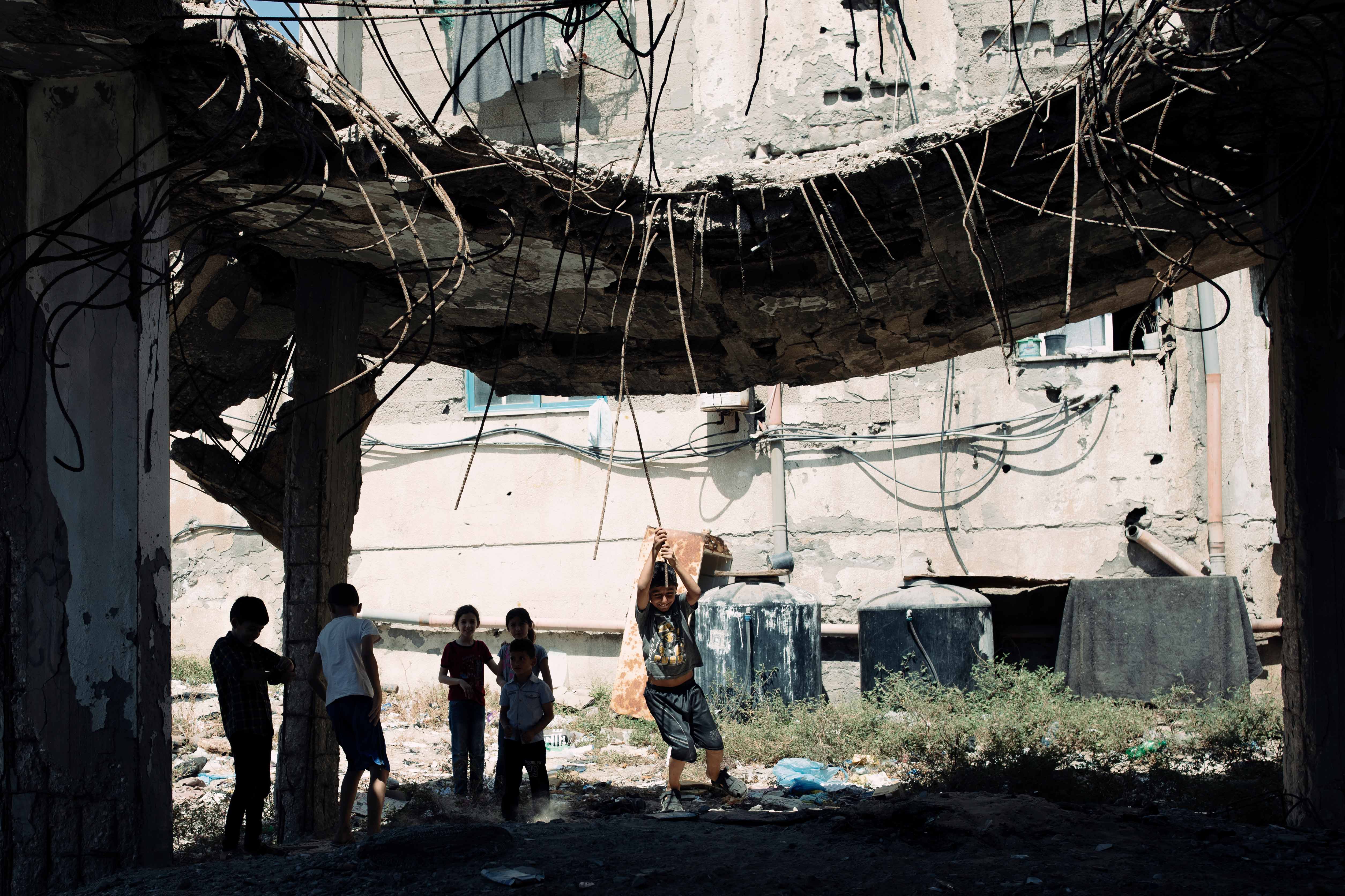Children are the most vulnerable in times of armed conflict. Wars and hostilities deprive them of their lives, families, homes, essentially from their very childhood. They become both targets and instruments of war. They are recruited as child soldiers, abducted, maimed or killed, sexually violated, their schools and hospitals are attacked, and they are deprived of essential humanitarian aid.
Ensuring that the needs of children are addressed before, during and after the conflict is at the core of the mandate of the Special Representative of the Secretary-General for Children and Armed Conflict, created 25 years ago by the General Assembly.
Despite the horrors they have endured, children have a chance to recover from atrocities and become positive agents of change in their communities. But for that, they need our support.
“From Despair to Hope: Children Beyond Armed Conflict” aims at reflecting on the complexity of the lives of children amidst conflict, emphasizing both the tragedy and the faith in a better future.
Organized by the Office of the Special Representative of the Secretary-General for Children and Armed Conflict
“Step by step, we are proving that grave violations against children can be stopped. But much more is needed. Children are still in harm’s way. Peace is in short supply. Cycles of violence and despair won’t stop automatically. All partners need to continue supporting the Office’s vital monitoring and reporting work. We need to strengthen our support of released children so they can reintegrate into their communities. We need to place the needs and rights of children first in peace negotiations. And we need to honour their bravery and resilience by giving them a full and active voice in their countries’ futures. The Children and Armed Conflict mandate is more important than ever. Let’s keep the promise we made 25 years ago.” - United Nations Secretary-General António Guterres’ message to mark the 25th anniversary of the Children and Armed Conflict mandate
According to the latest Secretary-General Annual Report on Children and Armed Conflict, 19,379 children were victims of grave violations in 2020.
The 6 grave violations against children as identified and condemned by the UN Security Council are:
- The recruitment and use of children
- The killing and/or maiming of children
- Rape and other forms of sexual violence
- Abduction of children
- Attacks on schools and hospitals
- Denial of humanitarian access
Ending and preventing grave violations against children is at the heart of the children and armed conflict mandate
“This is a space devoid of the most basic human values; a space in which children are slaughtered, raped, and maimed; a space in which children are exploited as soldiers; a space in which children are starved and exposed to extreme brutality. Such unregulated terror and violence speak of deliberate victimization. There are few further depths to which humanity can sink.” - Impact of Armed Conflict on Children, Graça Machel, 1996
Children are the primary victims of armed conflict. Around the world, over 400 million children live in countries affected by violent conflict, per UNICEF's figures.
Kennedy, 13, South Sudan
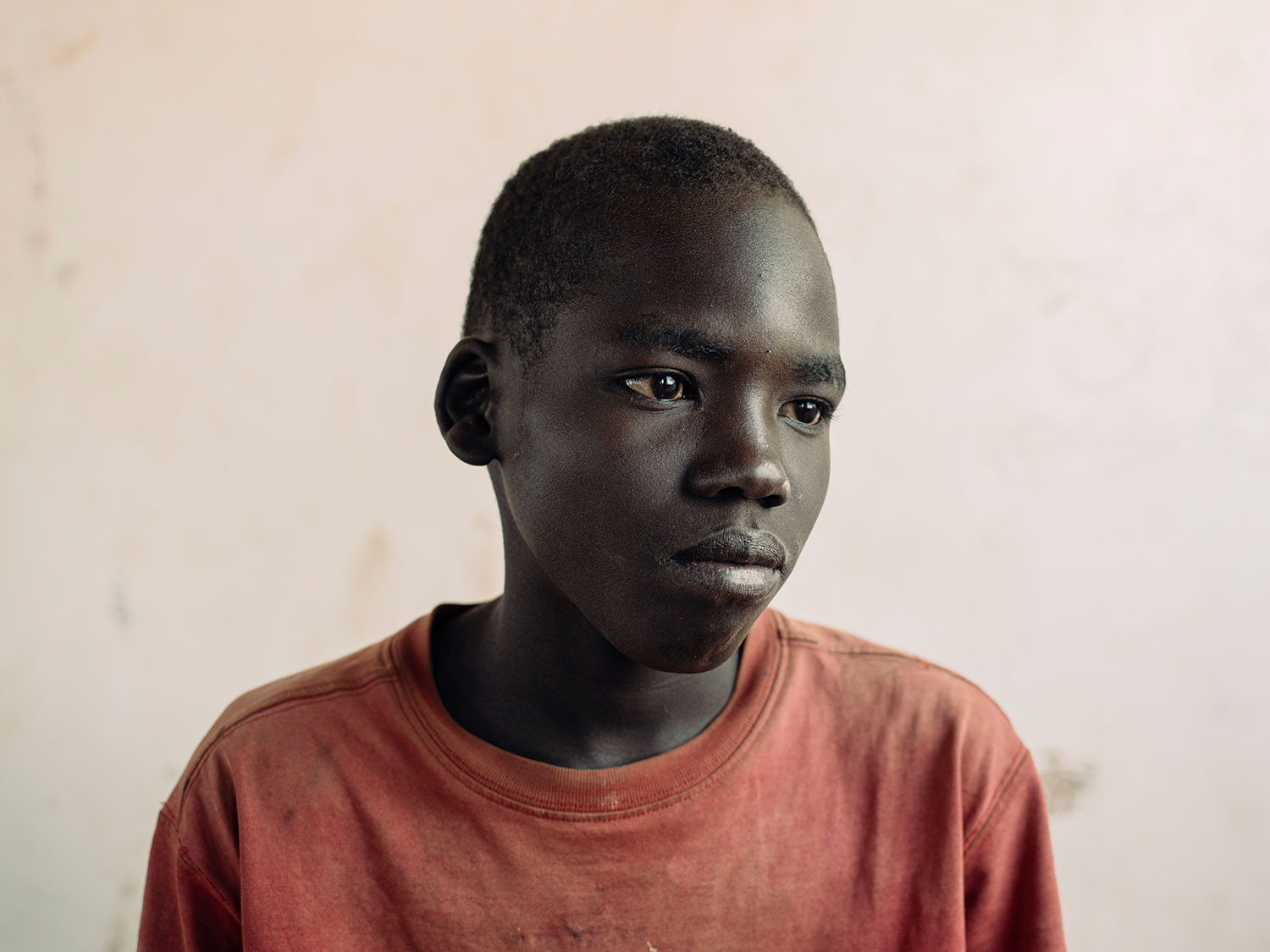
Photo by Paddy Dowling/Education Above All
Kennedy, 13, displaced to Uganda. He is among the 2.3 million South Sudanese refugees that fled the outbreak of civil war. Kennedy was denied a normal childhood and instead became a witness to violence, torture and death. With threat of armed attack, abduction or recruitment by militias, Kennedy’s family were unwilling to send him to school. Once in Uganda, Kennedy was still held back from attending school and fulfilling his dream of becoming a doctor, for his parents were unable to afford the cost of a pair of shoes required for enrolment.
63% of all South Sudanese refugees are children according to UNHCR
Moses, 18, South Sudan
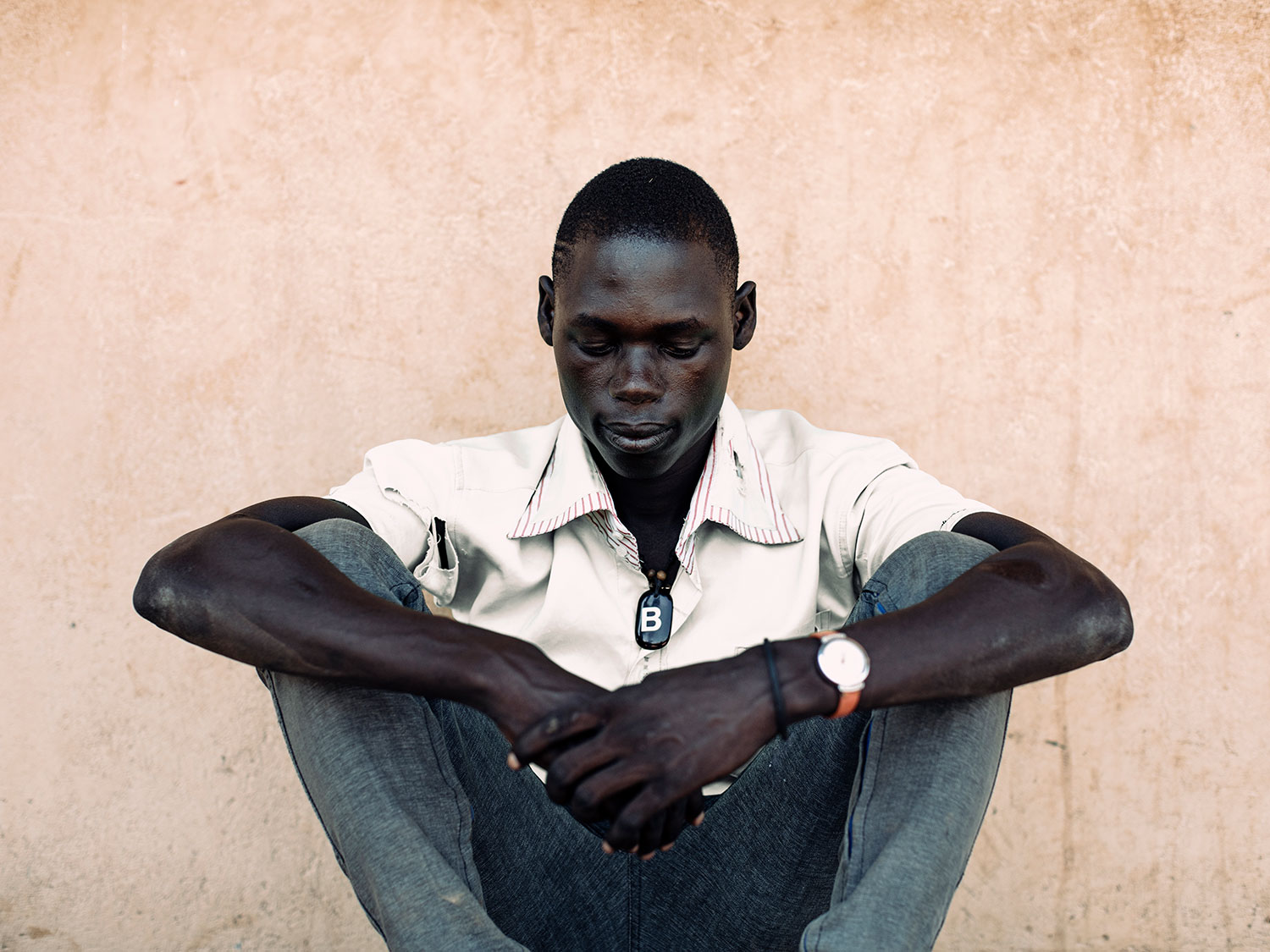
Photo by Paddy Dowling/Education Above All
When Moses* was 15, he saw his dad being murdered. He was then abducted by the same militia and trained in warfare and theft. The two years of combat that ensued saw Moses’ position in the armed group grow from strength to strength, rewarded with promotion to military intelligence by his commander. “I had to kill so many people, innocent people from my country, I just stopped counting...so many,” says Moses, now 18, his eyes on the floor.
* Featured individual is no longer a child but it's his experience as a minor that is reflected in this exhibit.
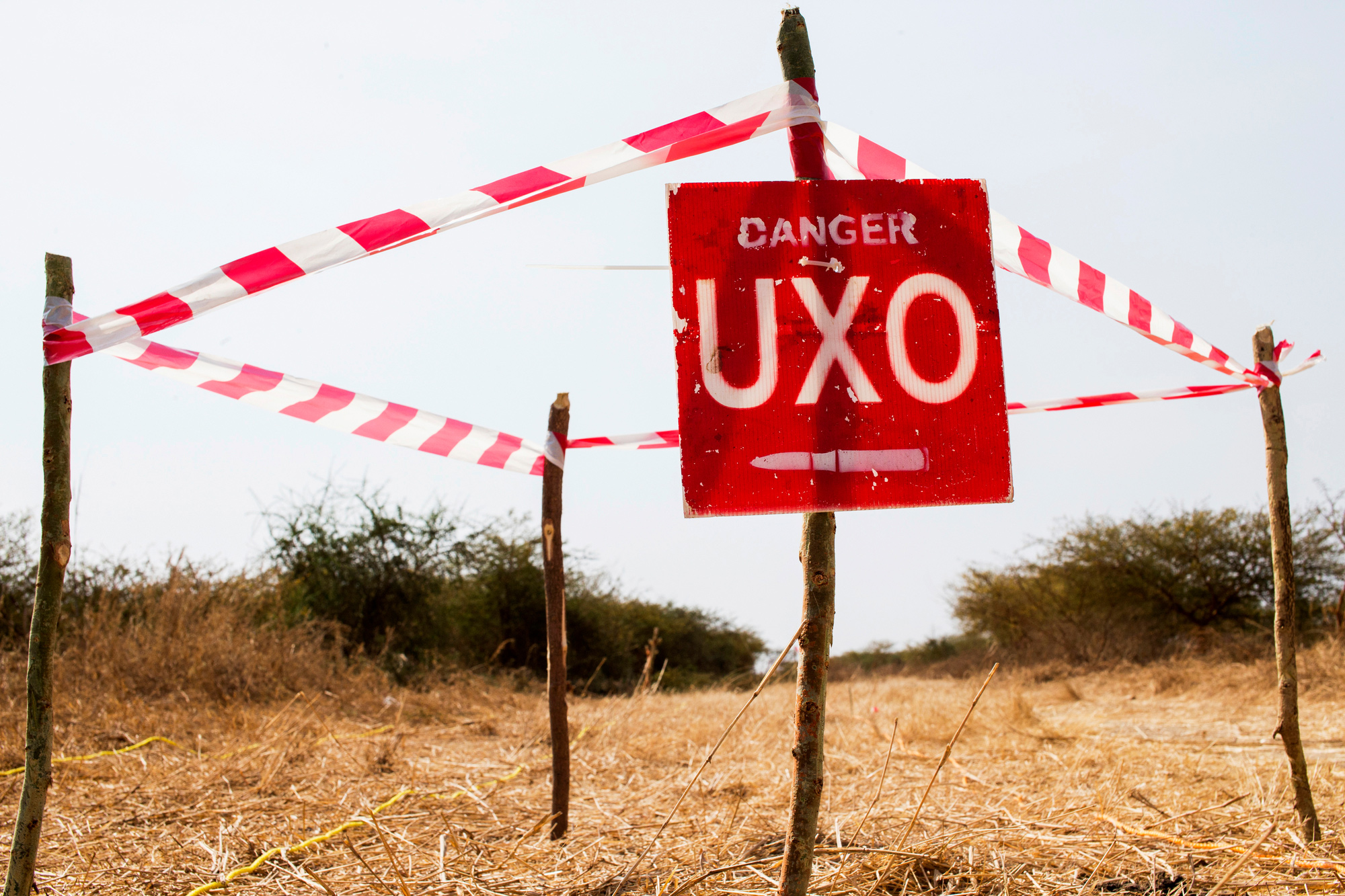
Mine clearance of route leading into Rubkona airstrip extension near Bentiu. UN Photo/JC McIlwaine (South Sudan)
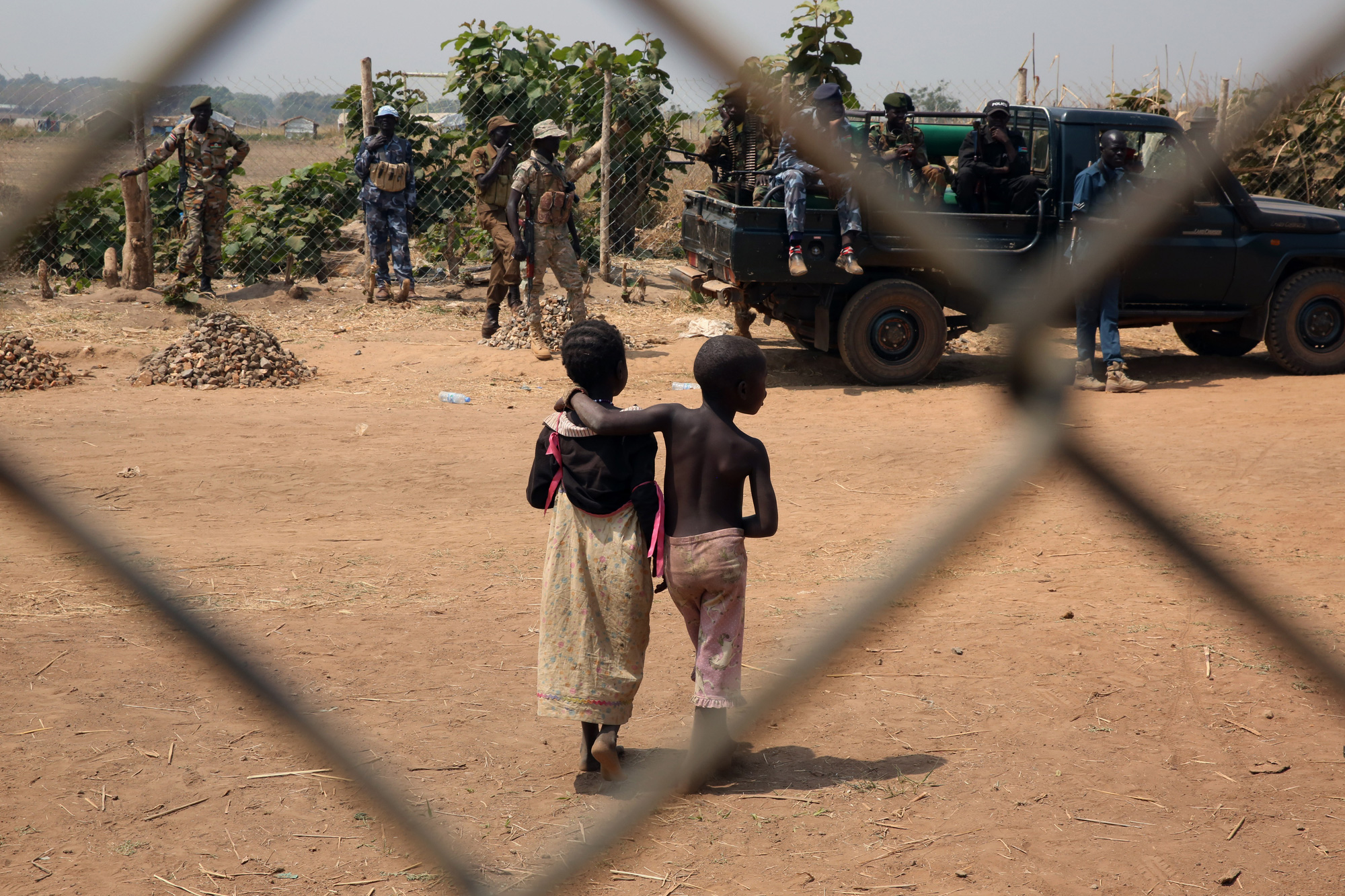
UNMISS establishes a new base in Yei. UN Photo/Eric Kanalstein (South Sudan)
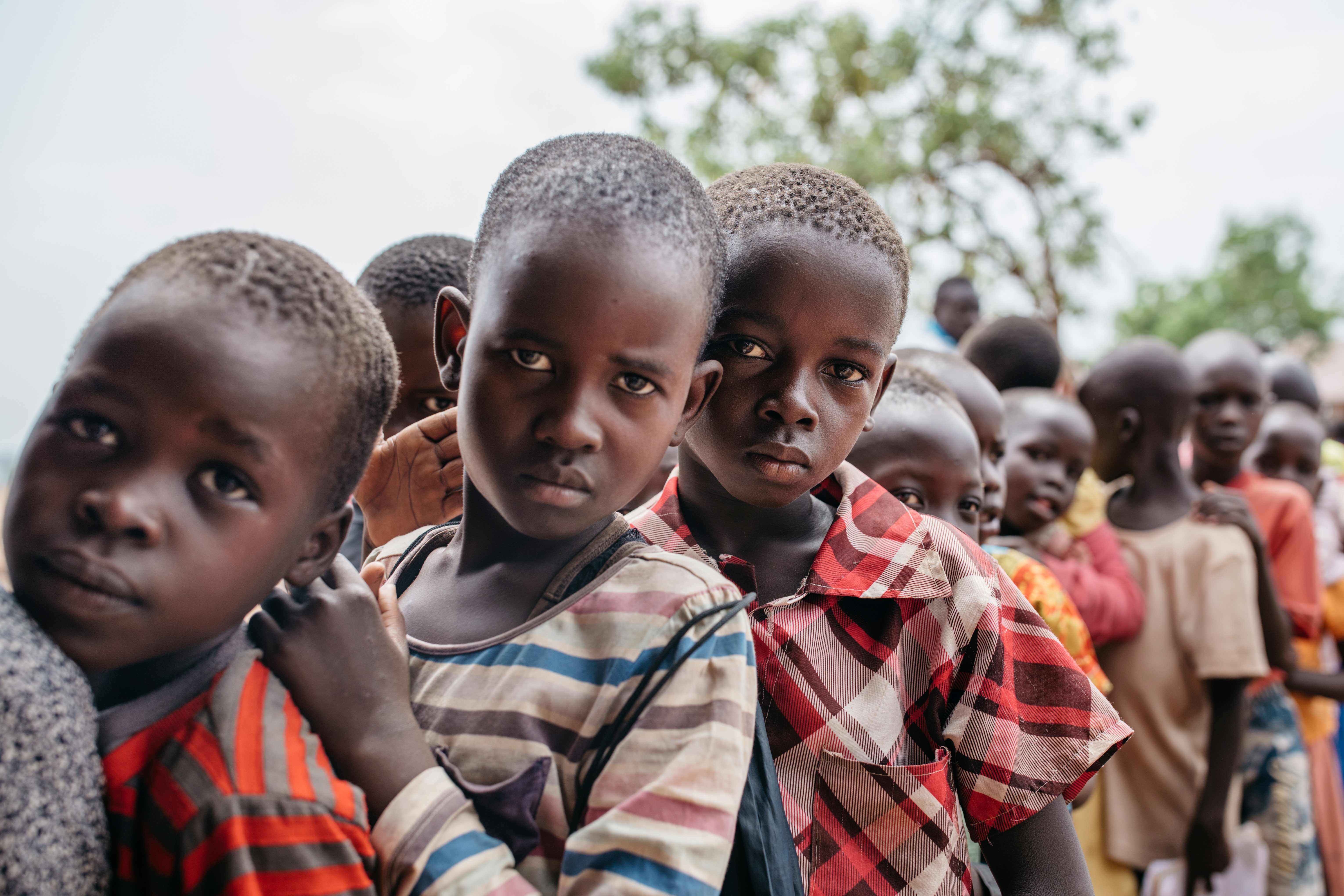
Photo by OSRSG CAAC/Paddy Dowling (South Sudan)
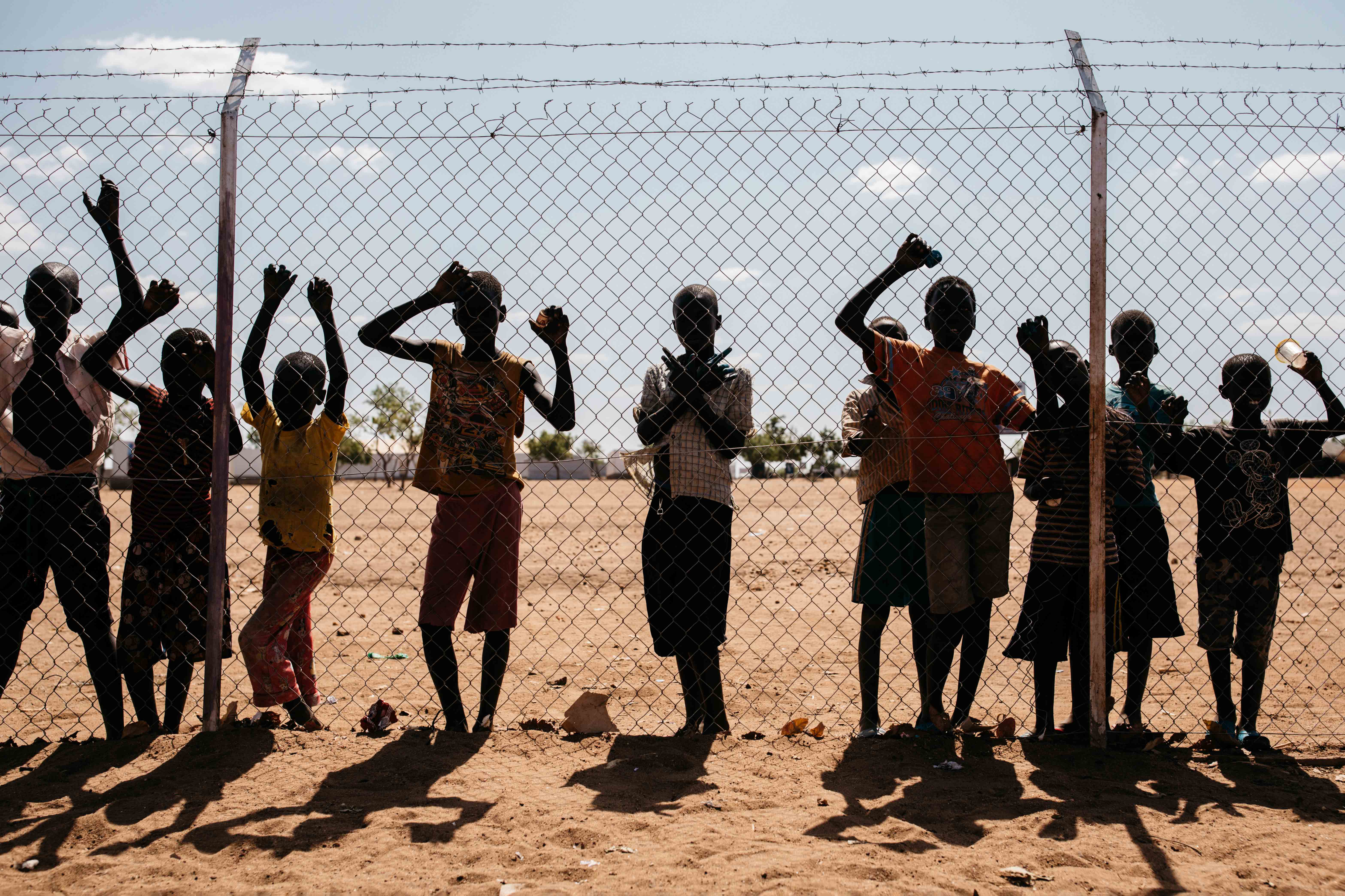
Photo by OSRSG CAAC/Paddy Dowling (South Sudan)
Nakato, 19, Uganda
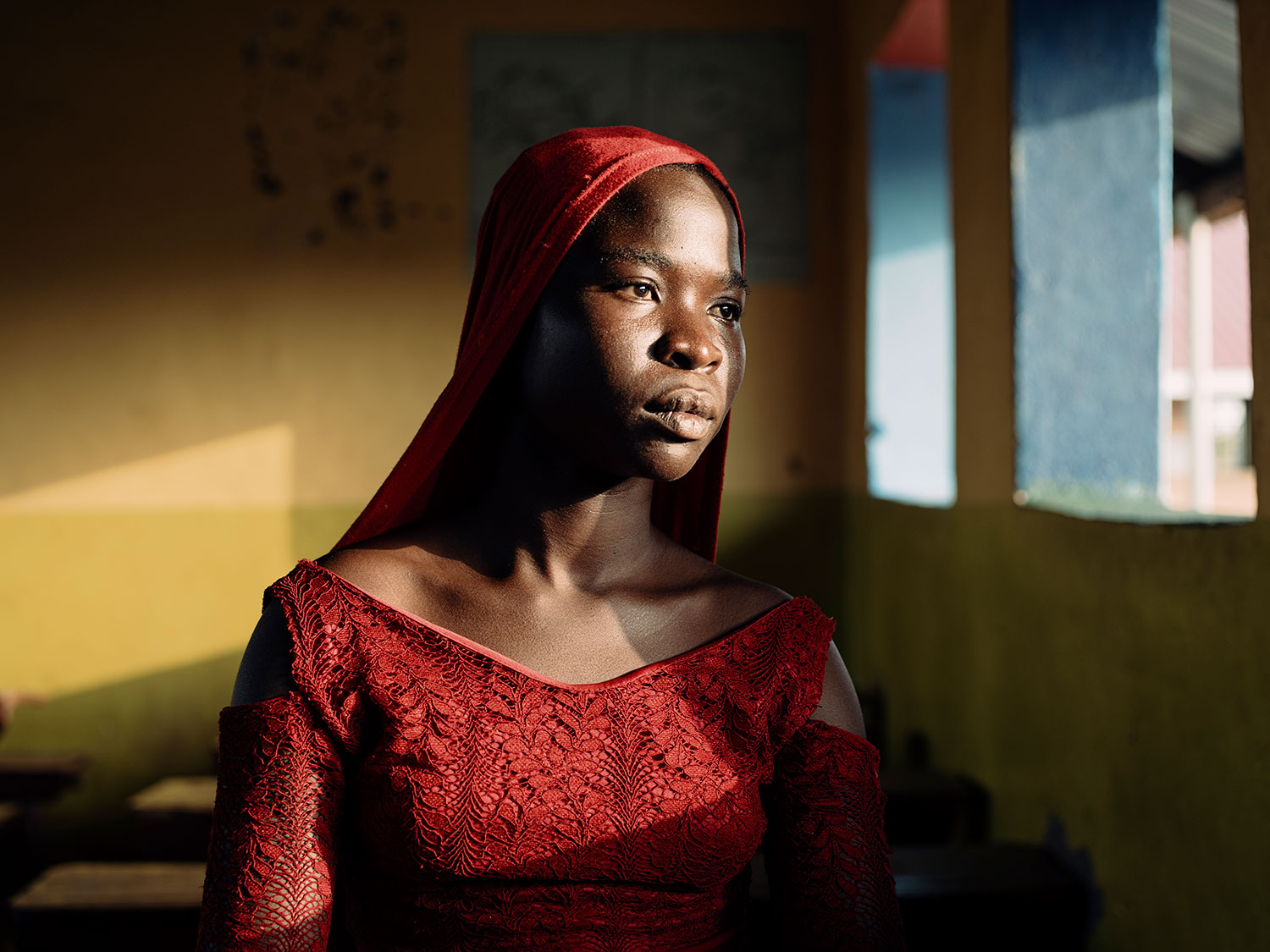
Photo by Paddy Dowling/Education Above All
Nakato*, 19, was born and raised in Yumbe, Uganda. She is actively involved in a movement called “Raise up and Talk” to empower the younger generation to share their experiences and stories as a form of therapy to help process the trauma from a life in conflict. Uganda’s open-arms policy has allowed 800,000 refugees from South Sudan to make the journey across the border into northern Uganda. Many youth her age have witnessed unspeakable brutalities. “The stories of refugees are so important to learn from,” she said. She also explained how the community frowns upon equality in education, holding women back from progressing in life. “I am asking for change in attitudes, I want human rights for all, that means men and women.” Nakato dreams of becoming a journalist.
* Featured individual is no longer a child but it's her experience as a minor that is reflected in this exhibit.
Moza, 8, Iraq
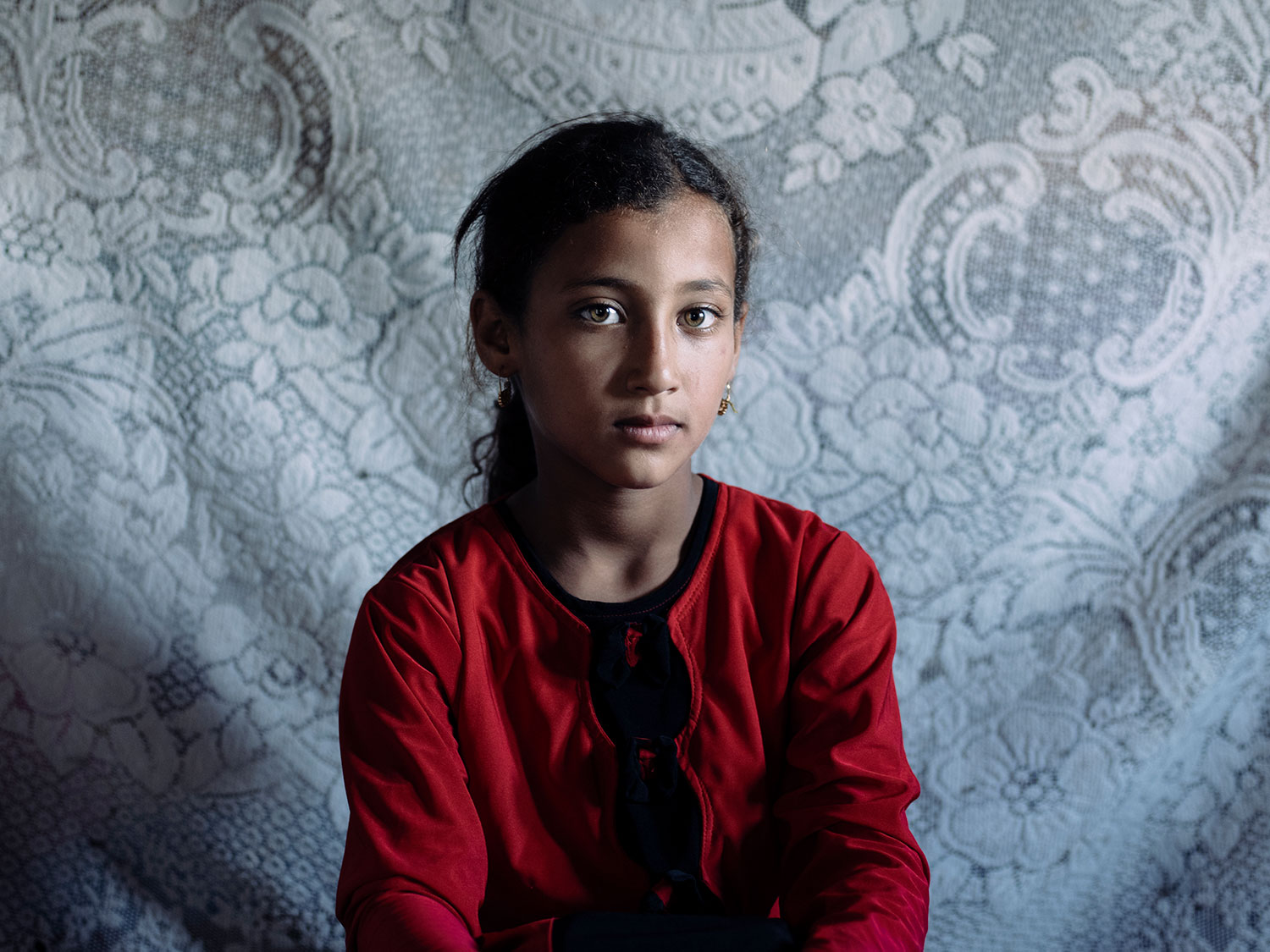
Photo by Paddy Dowling/Education Above All
Moza was born and raised east of the Tigris river that divides the city of Mosul. Her parents and five siblings have lived in a two-room concrete dwelling for 10 years. The family income is only $80 per month, which barely covers bills. They are forced to take credit from shops to be able to eat. Moza is due to enroll back into schooling. However, she cares for her mother who suffers respiratory problems due to a lodged bullet in her lung after being caught in crossfire during the conflict. Moza doesn’t know what to expect as she has never set foot in a classroom. Two years beyond the normal enrolment age of six, she still has great dreams of working with NGOs to help residents displaced from the city.
Usama, 11, Iraq
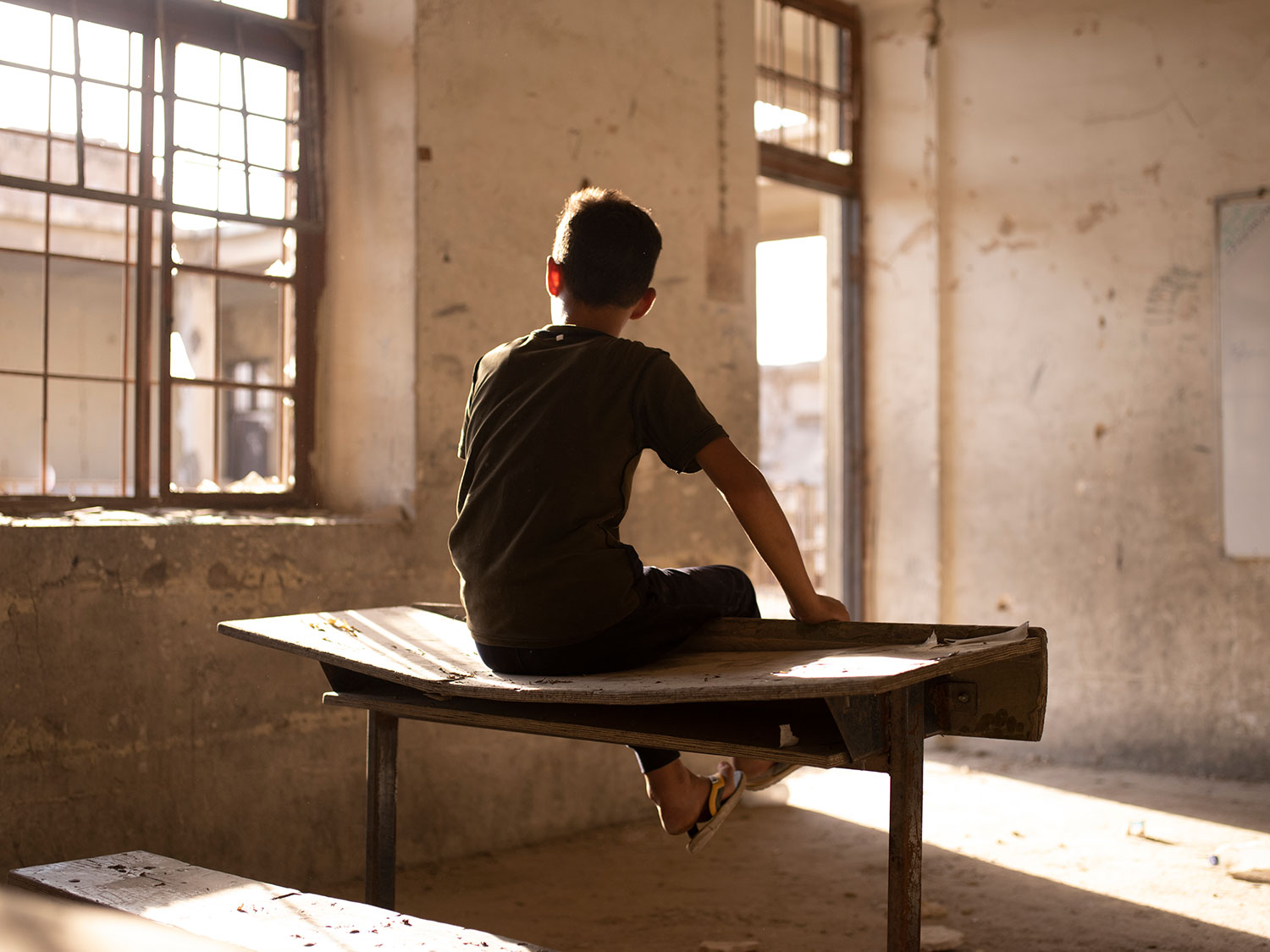
Photo by Paddy Dowling/Education Above All
Usama in his former 6th grade classroom which is now littered with rubble, broken glass and upturned desks after ISIS took over the school. Usama spent 5 years out of education and now must walk almost an hour to the nearest rehabilitated school. “I loved my school; my friends and I were so sad when the school was damaged through the continued conflict. We hope it will re-open someday soon.” Usama explained how happy he is to be back in a classroom to fulfil his big dreams of one day becoming either a lawyer or a doctor.
In Iraq, almost 3.2 million children are out of school (UNICEF), making them more vulnerable to exploitation and abuse, such as recruitment by armed elements and early marriage.
Tabarak, 6, Iraq
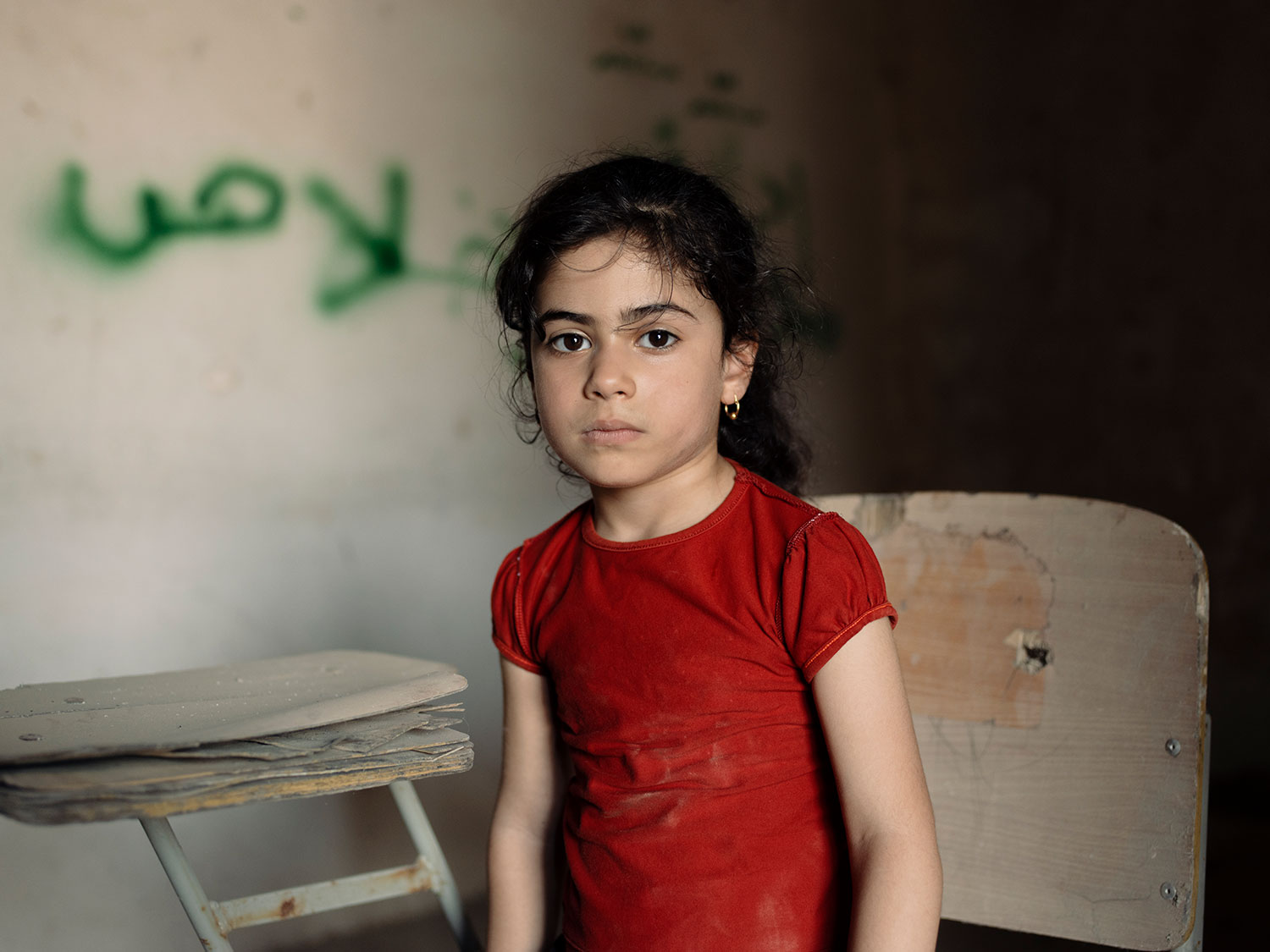
Photo by Paddy Dowling/Education Above All
Tabarak lives in the war-torn western district in the old city of Mosul. She sits in an empty classroom at Al-Ekhlas primary school in the Nabi Jarjis neighbourhood. It is one of 350 schools in need of urgent rehabilitation. “Living in Mosul has been difficult, it has damaged many schools and houses, I don’t want any more fighting, I just look forward to starting school now. I dream of becoming a teacher someday and I hope that school helps me to do that”.
With the last stand of ISIS in Mosul in 2017, the Department of Education reported 130 schools had been totally destroyed.
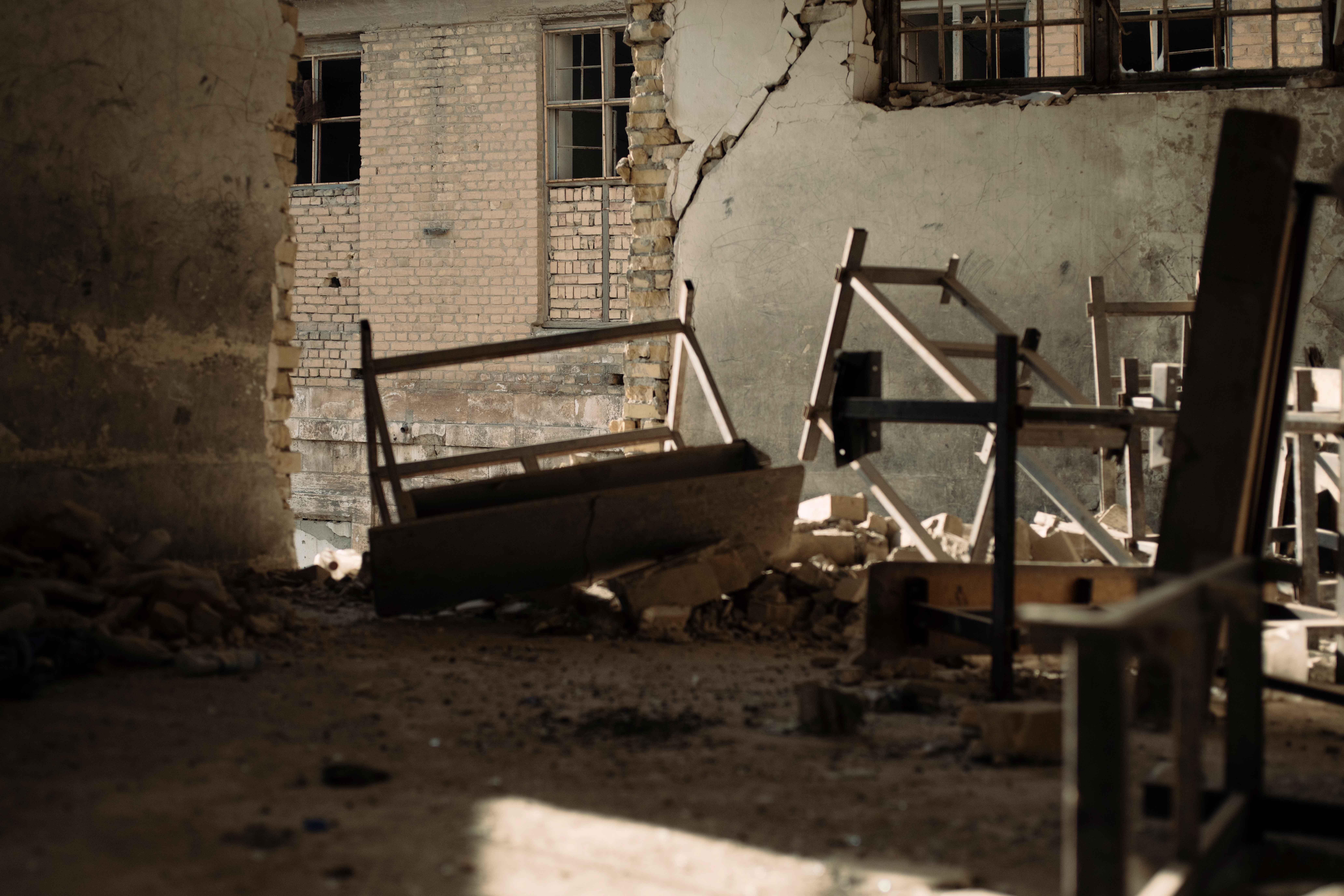
Photo by OSRSG CAAC/Paddy Dowling (Mosul, Iraq)
Sarah, 14, Democratic Republic of the Congo
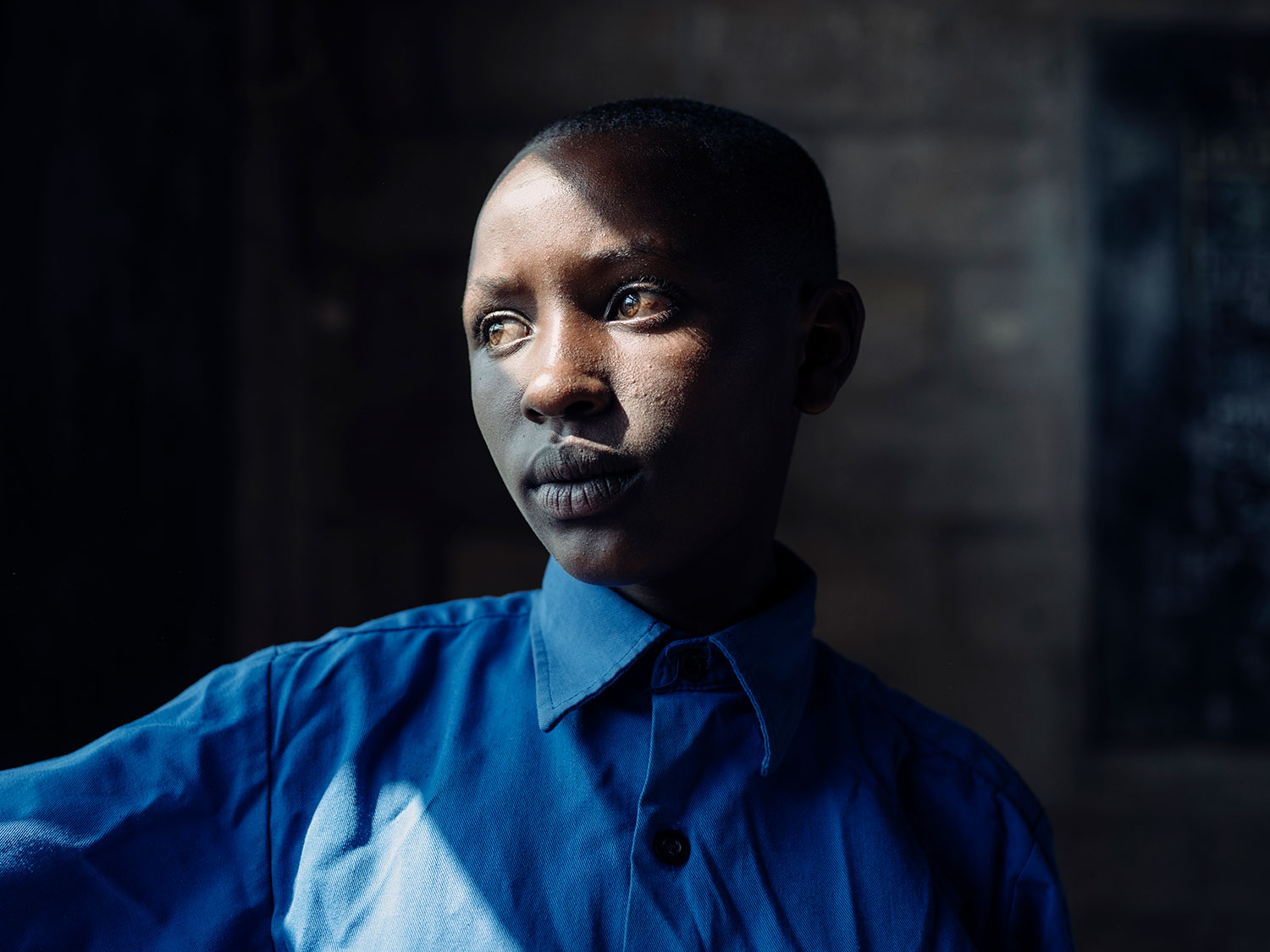
Photo by Paddy Dowling/OSRSG CAAC
Sarah, 14, arrived to Kigeme refugee camp from DRC in 2012. Her parents, now unemployed in Rwanda, worked as rag traders. They made the decision to flee the fighting for the safety and relative calm of Rwanda. They were made to feel very welcome by the host community. Sarah is enrolled in class, three years behind where she should be, due to conflict, and she really enjoys her schooling. She dreams one day of becoming an accountant so she can help her family live a better life.
The Democratic Republic of the Congo held the tragic record of the highest number of children recruited and used in 2020. Close to 15% of children between 5 and 17 years were engaged in child labour in the country. The recruitment and use of children is considered a worst form of child labour.
Charles, 16, Democratic Republic of the Congo
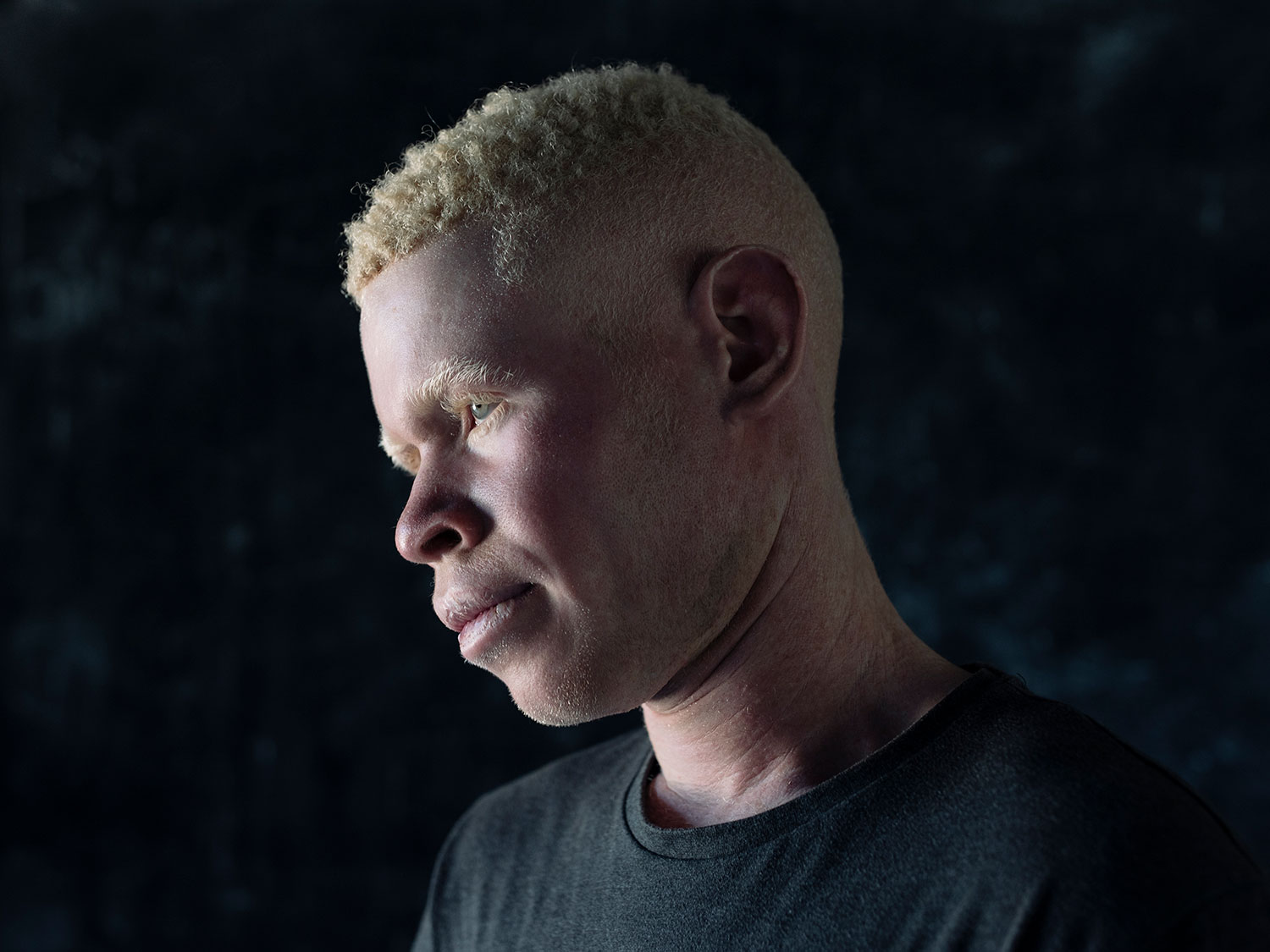
Photo by Paddy Dowling/Education Above All
Charles, 16, lived with his mother and father in DRC. His family was forced to leave because Charles was persecuted for being an albino. His father was repeatedly beaten after refusing to sell Charles to witchdoctors, who believe teeth, fingers and eyes brought good luck to those who bought their body parts. The transition for Charles arriving in Uganda from DRC has left him with large gaps in his education. Leaving as a senior in secondary school, he now finds himself back in primary school – and facing a similar stigma as an albino in Uganda. His long walks to school are interrupted by strangers attempting to lure him away to profit from the sale of his body parts. Charles explained: “I will never feel safe, however my safety now is less important to me than getting an education. I am determined to get my diploma and have a job where I can help protect the rights of other albinos.”
Niyosenga, 12, Democratic Republic of the Congo
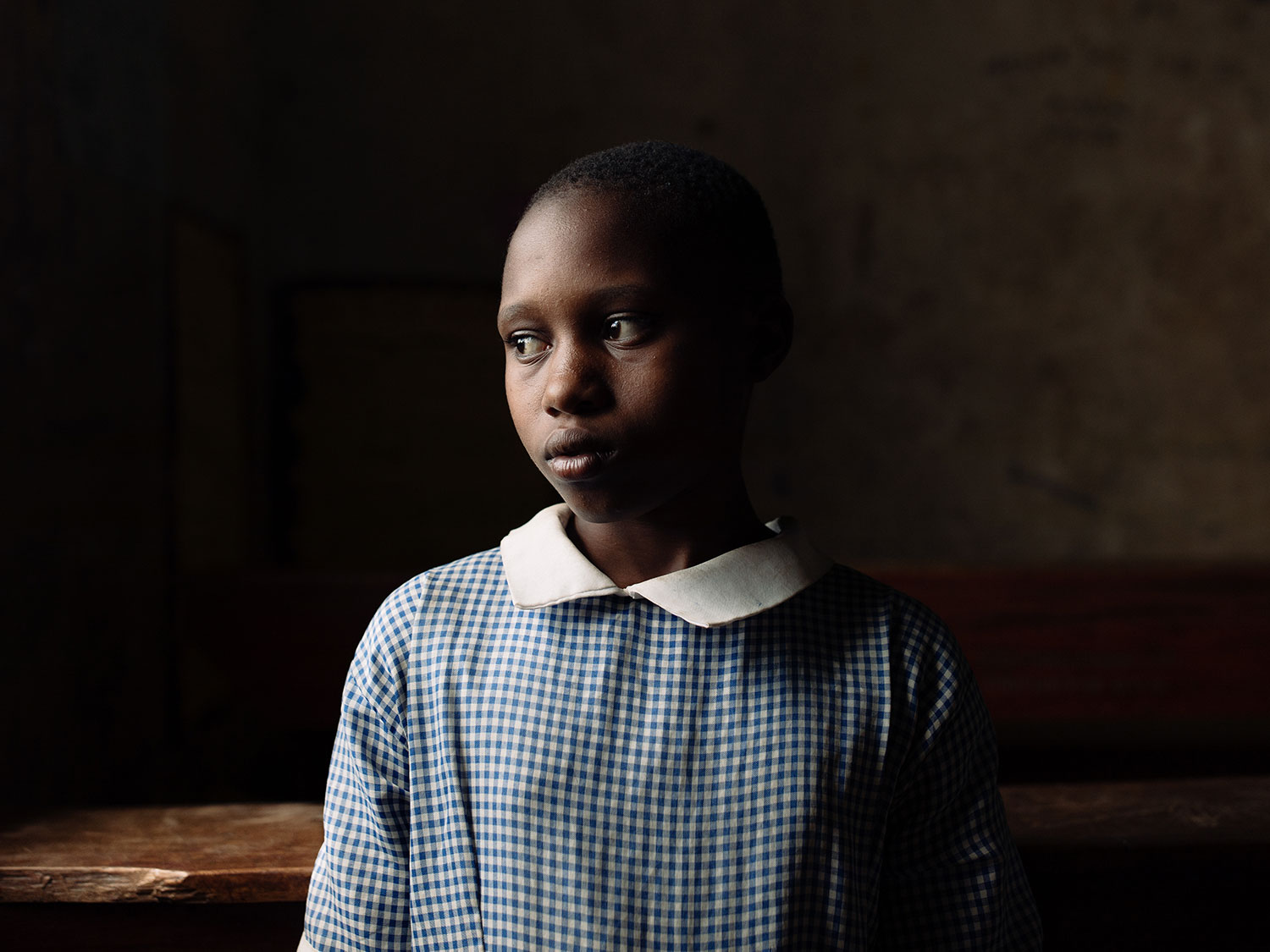
Photo by Paddy Dowling/Education Above All
Niyosenga,12, arrived from Kiyiri, DRC, in 2016. Her mother was killed in the fierce fighting which swept through towns and villages. She made the journey with her father and grandmother to the relative safe haven of Uganda. Niyosenga remained out of education in DRC until the age of nine as the long walk to school was too dangerous with roads closed by police or rebel militia. To help pay for Niyosenga’s school fees, her father grows maize while her grandmother, 72, weaves baskets.
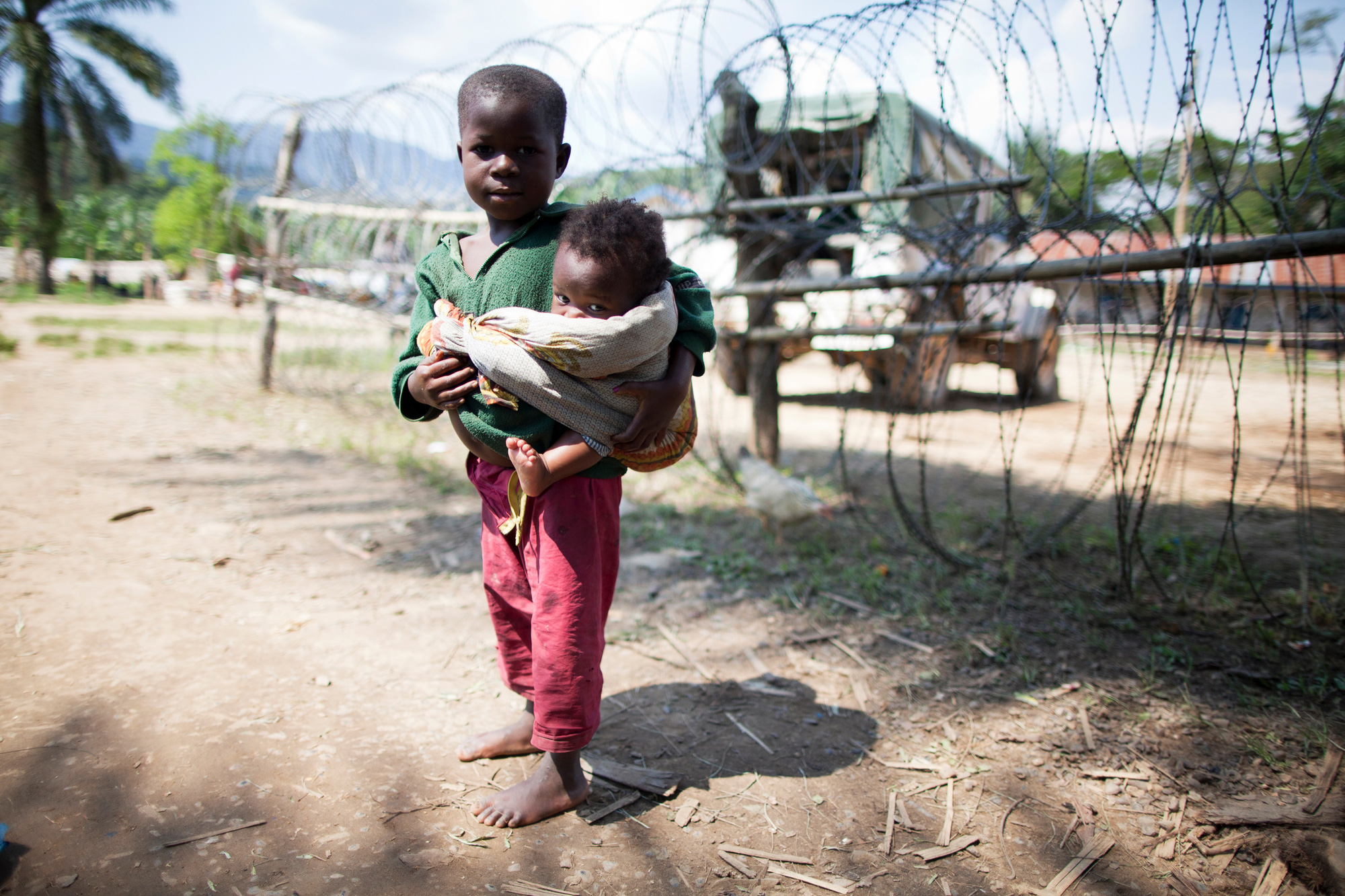
Children seeking refuge near in North Kivu. UN Photo/Sylvain Liechti (Democratic Republic of the Congo)
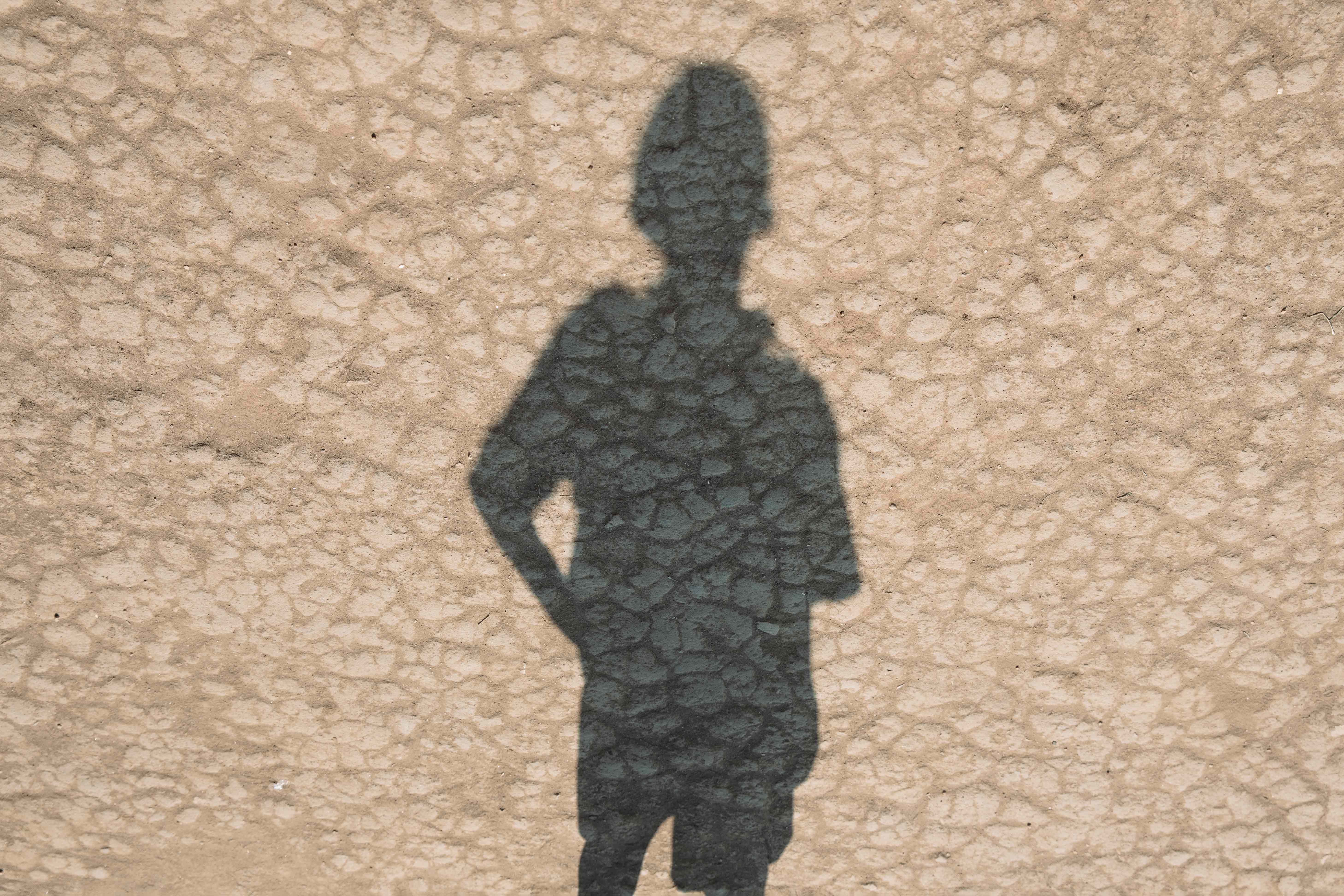
Photo by OSRSG CAAC/Paddy Dowling (Democratic Republic of the Congo)
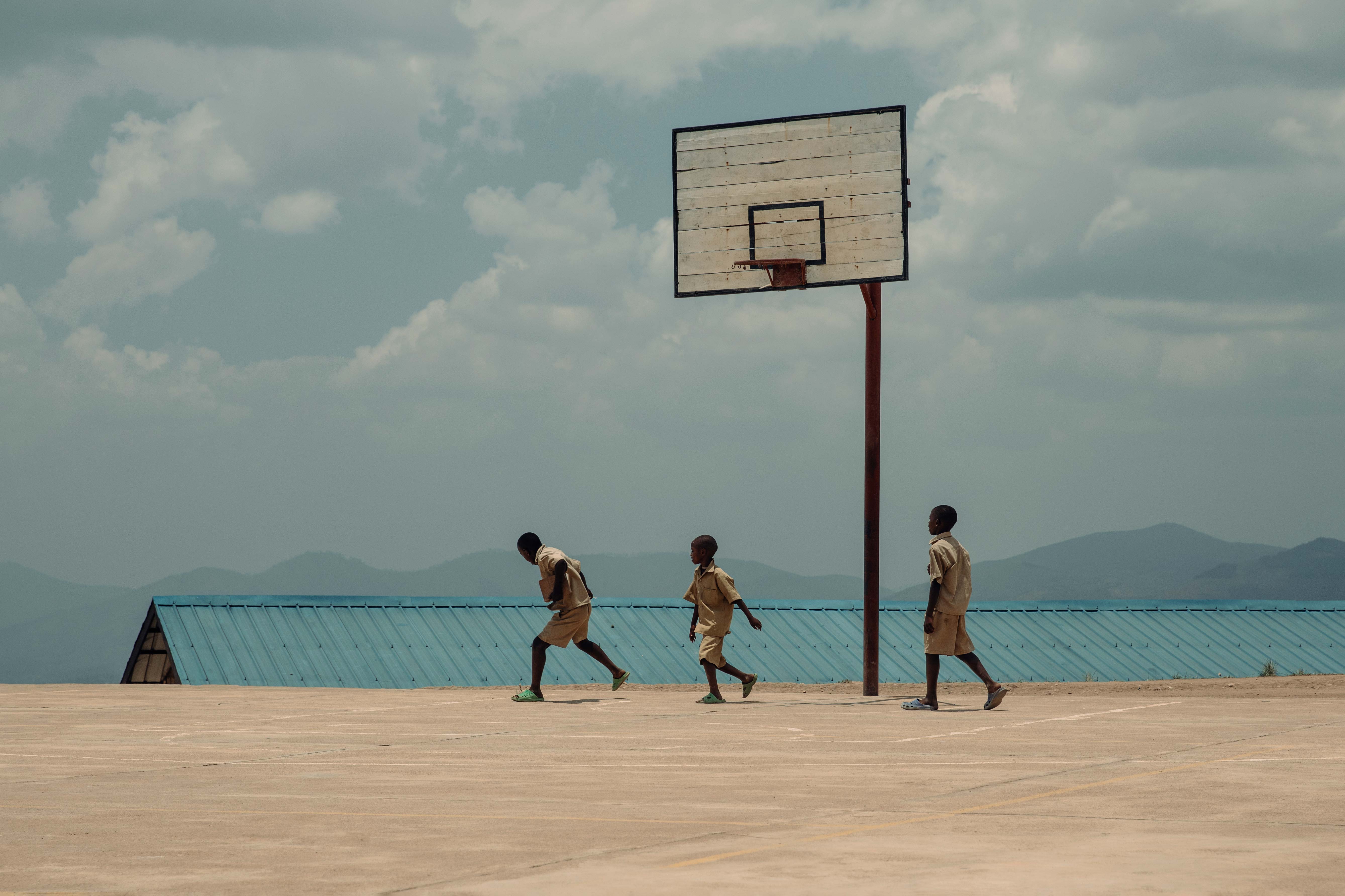
Photo by OSRSG CAAC/Paddy Dowling (Democratic Republic of the Congo)
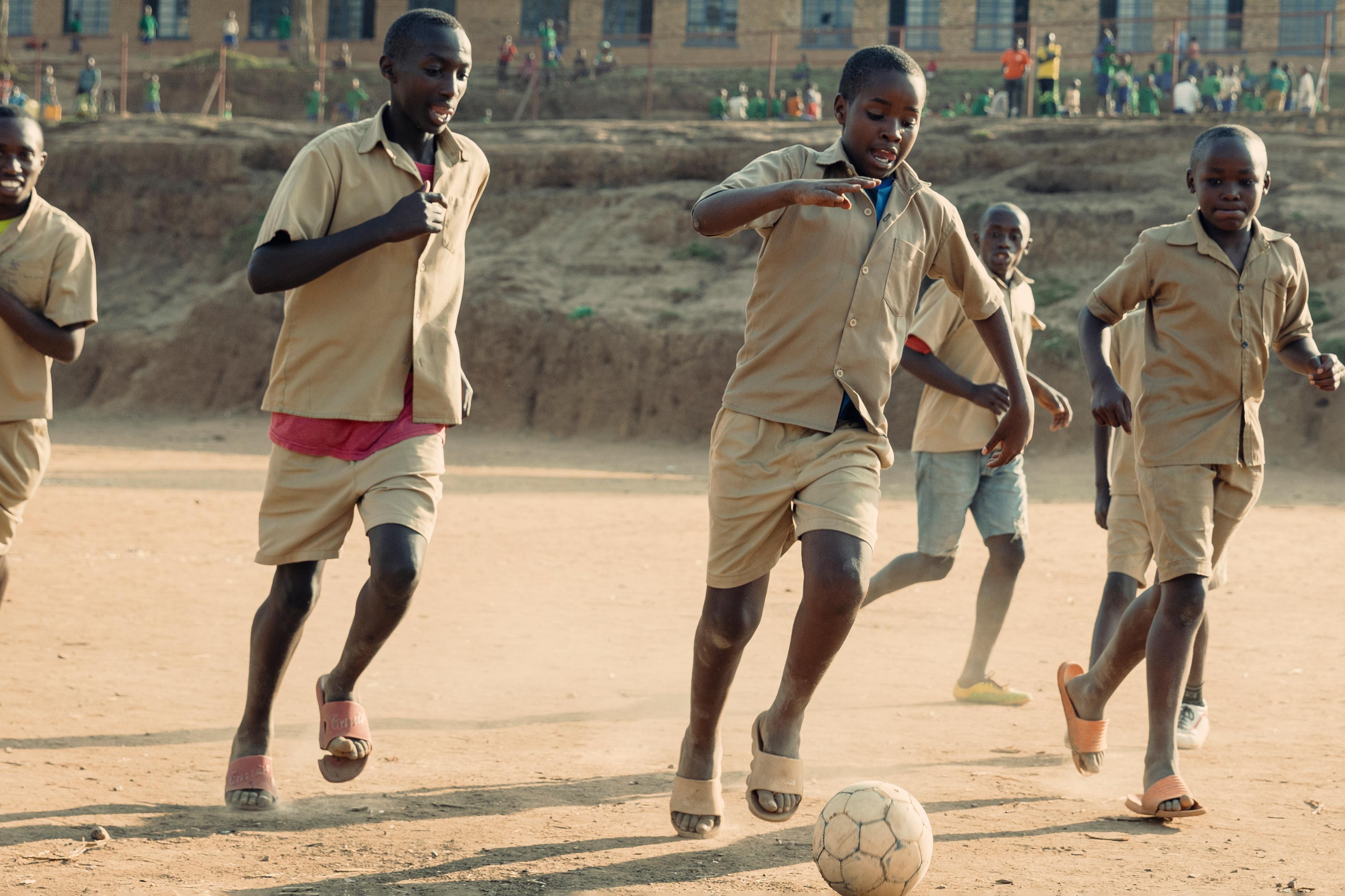
Photo by OSRSG CAAC/Paddy Dowling (Democratic Republic of the Congo)
Ali, 9, Syria
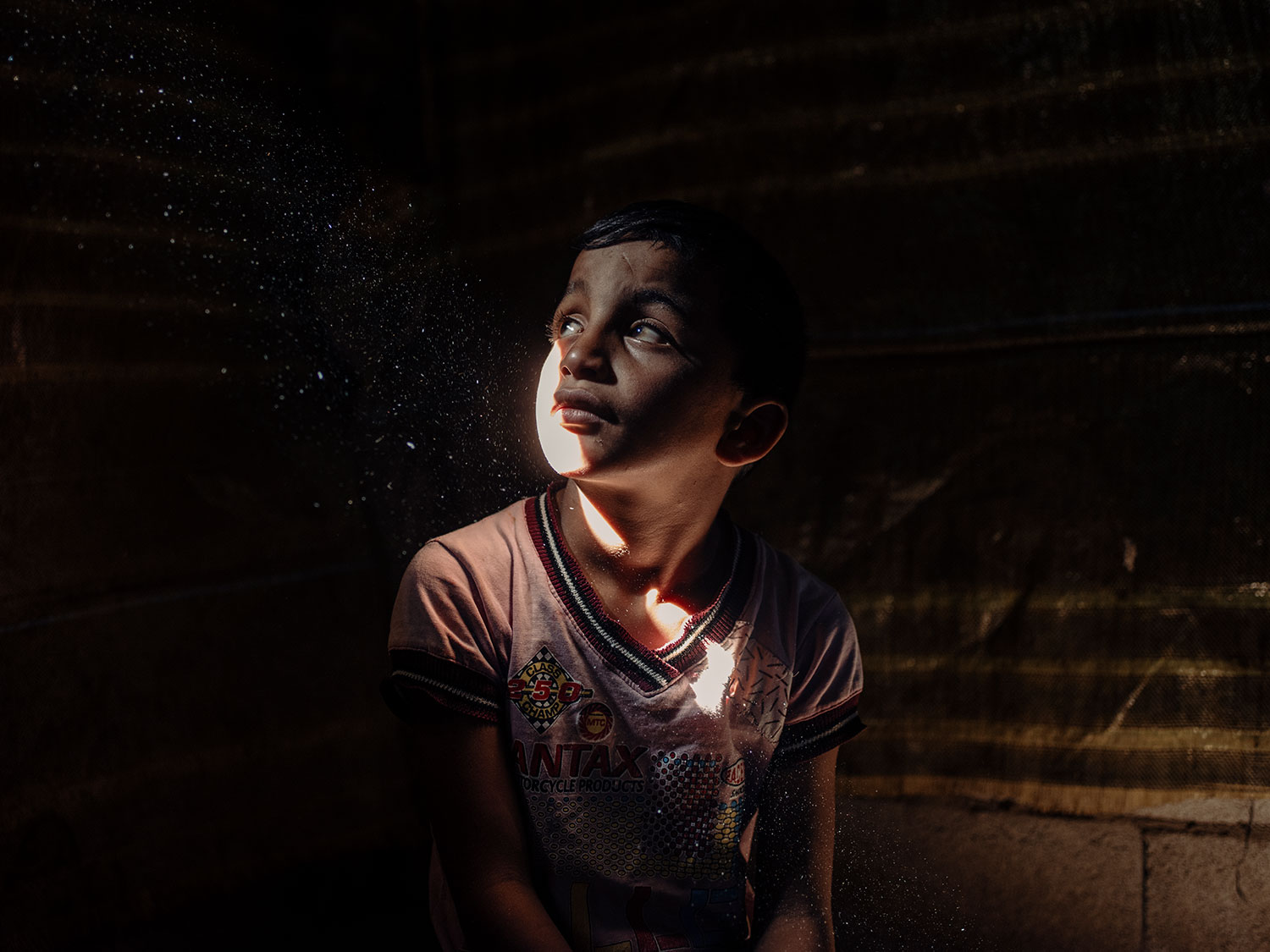
Photo by Paddy Dowling/Education Above All
Ali arrived in Lebanon with his family in 2011 from eastern Syria. They fled their home by bus toward a safer haven in Lebanon at the outbreak of civil war, which tore through their country. Heavy shelling bombarded their bus and the remainder of their journey had to be made on foot. Now the collective family income is barely enough to cover any of their bills and as with most Syrian refugees, they are in debt to their landlords and to local shops owners. Ali, one of the family’s 10 children, attends school 10km from home and dreams, one day, to be able to return home with his family to Syria.
Millions of Syrian children require some form of humanitarian assistance. There are currently some 488,000 school-aged Syrian refugee children in Lebanon (3-18 years).
Shaymaa, 4, Syria
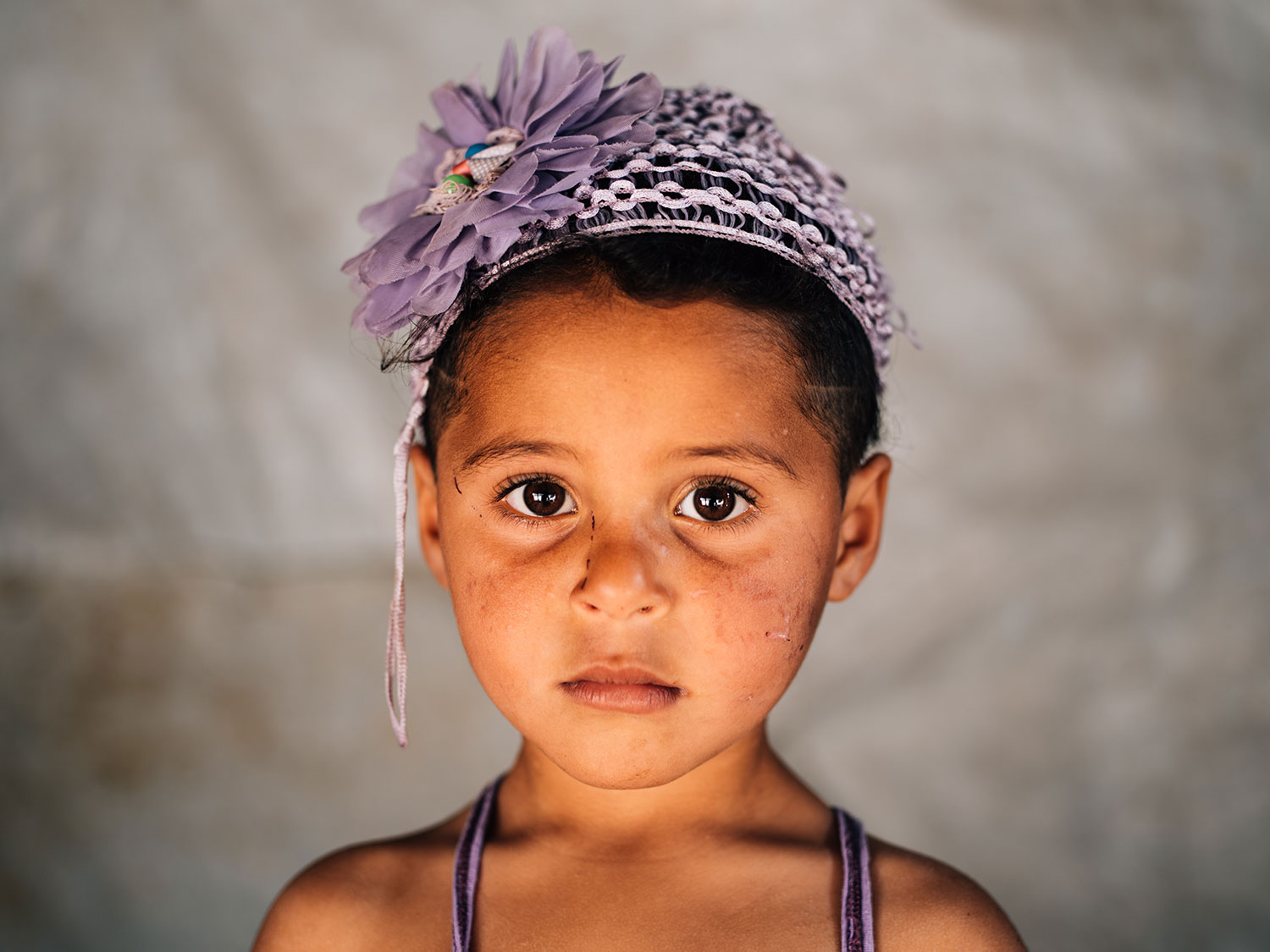
Photo by Paddy Dowling/OSRSG CAAC
Shaymaa is a Syrian refugee born in Lebanon. Her family arrived from the city of Halab in 2014. As they fled, they saw dead bodies of fathers, mothers and their children lining the pavements and roads near their home, a result of heavy conflict. They fled under the cover of darkness by car to Lebanon. They explained they would love to return to Syria at some point in time but “life in Lebanon is better than a war zone”. They explained how hard life in the camps has been. Lack of water, and with financial handouts being cut by aid agencies, less access to food for the family.
Afat, 12, Syria
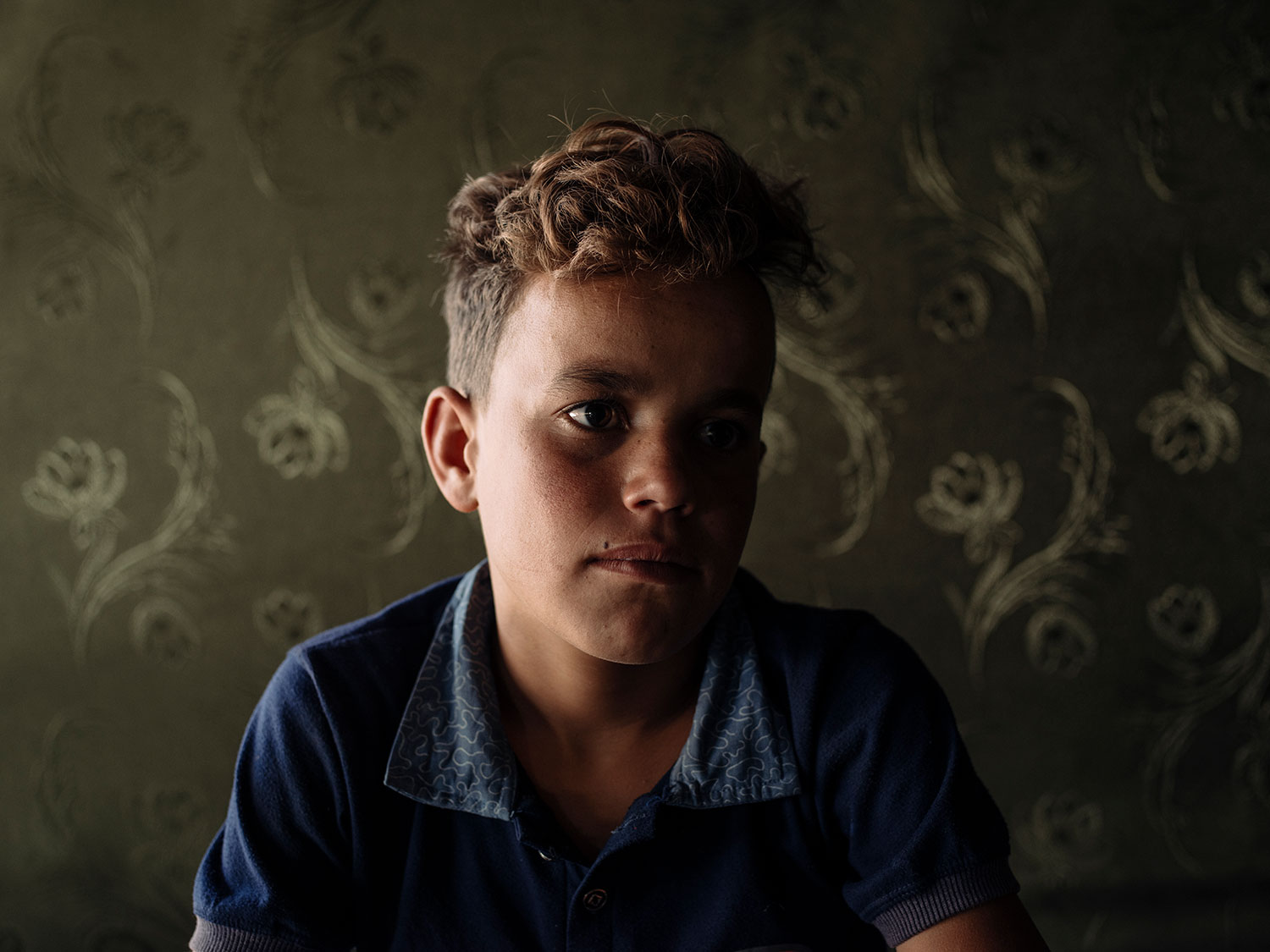
Photo by Paddy Dowling/Education Above All
Afat left his home in Syria six years ago, forced out by the civil war which displaced millions of people, in his case to the Bekaa Valley, Lebanon. He is one of the thousands of Syrian refugee children sat in doorways of Lebanon’s many tents, shelters and makeshift homes dreaming of an education. Instead, he works 11 hours a day collecting scrap metal which he sells for around $3.25. He knows he has a right to education, but he is concerned to help provide for his family. He dreams of one day being able to return home to Syria with his family, to a better life.
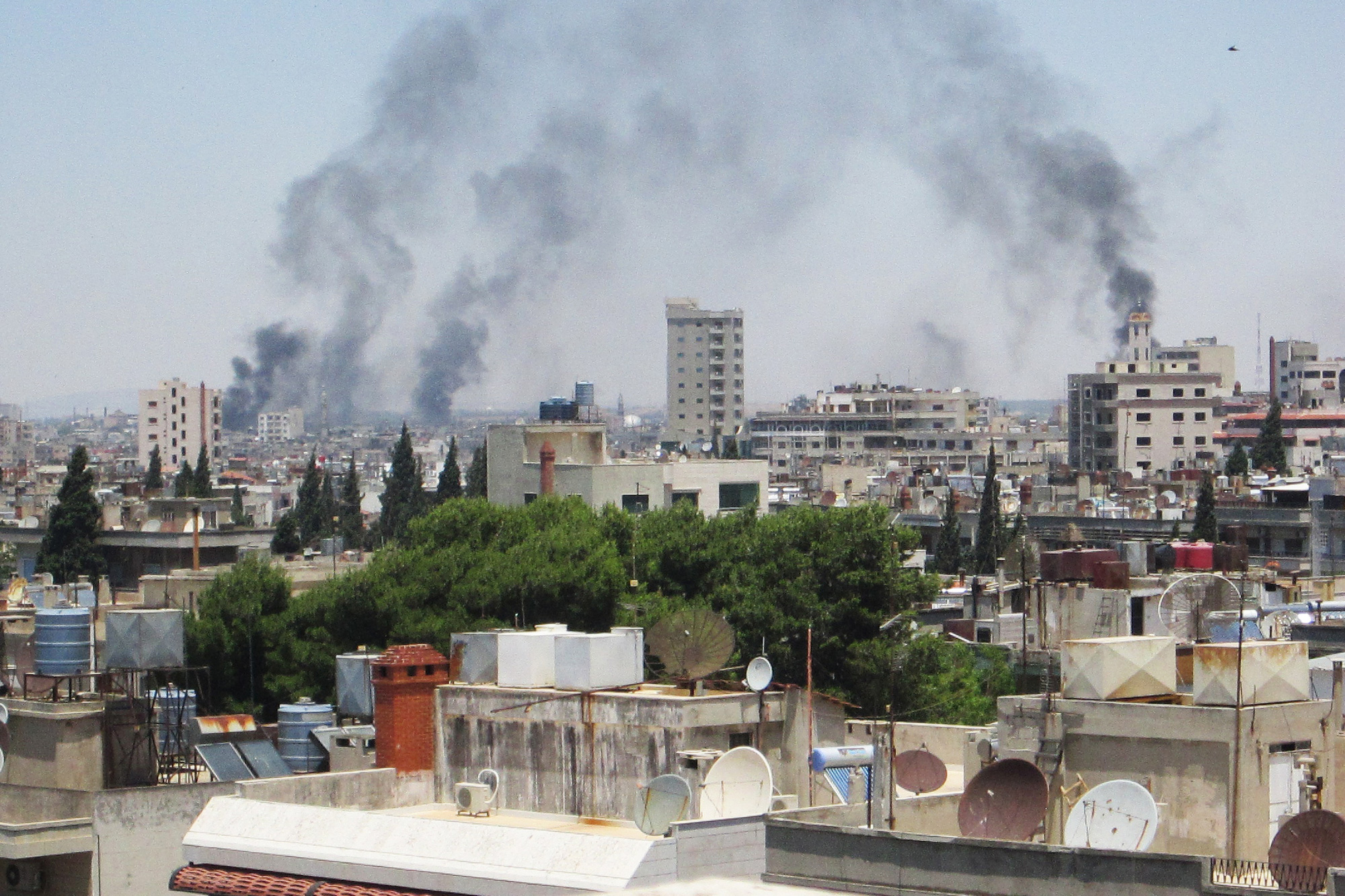
Smoke billows skyward as homes and buildings are shelled in the city of Homs. UN Photo/David Manyua (Syria)
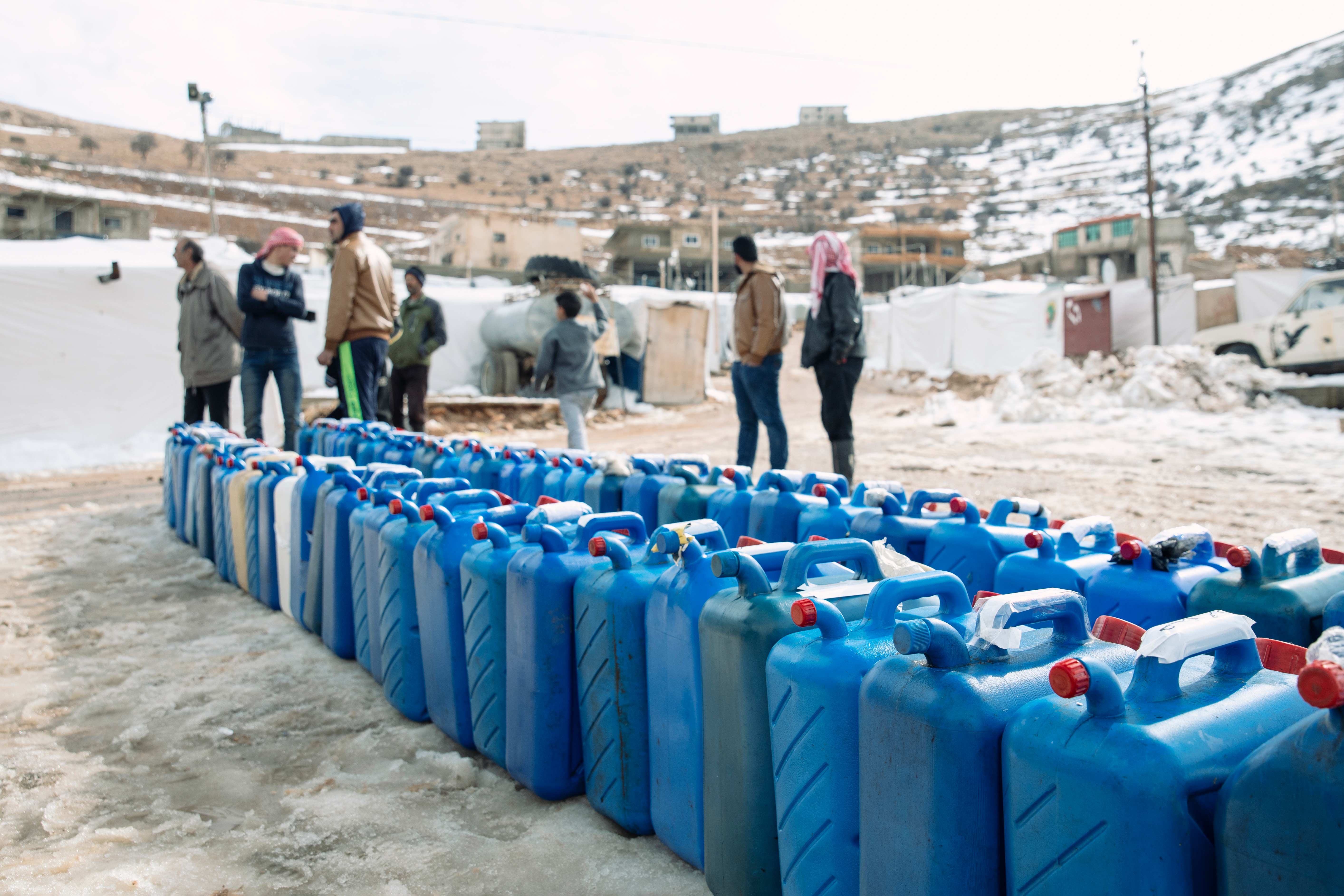
Photo by OSRSG CAAC/Paddy Dowling (Syria)
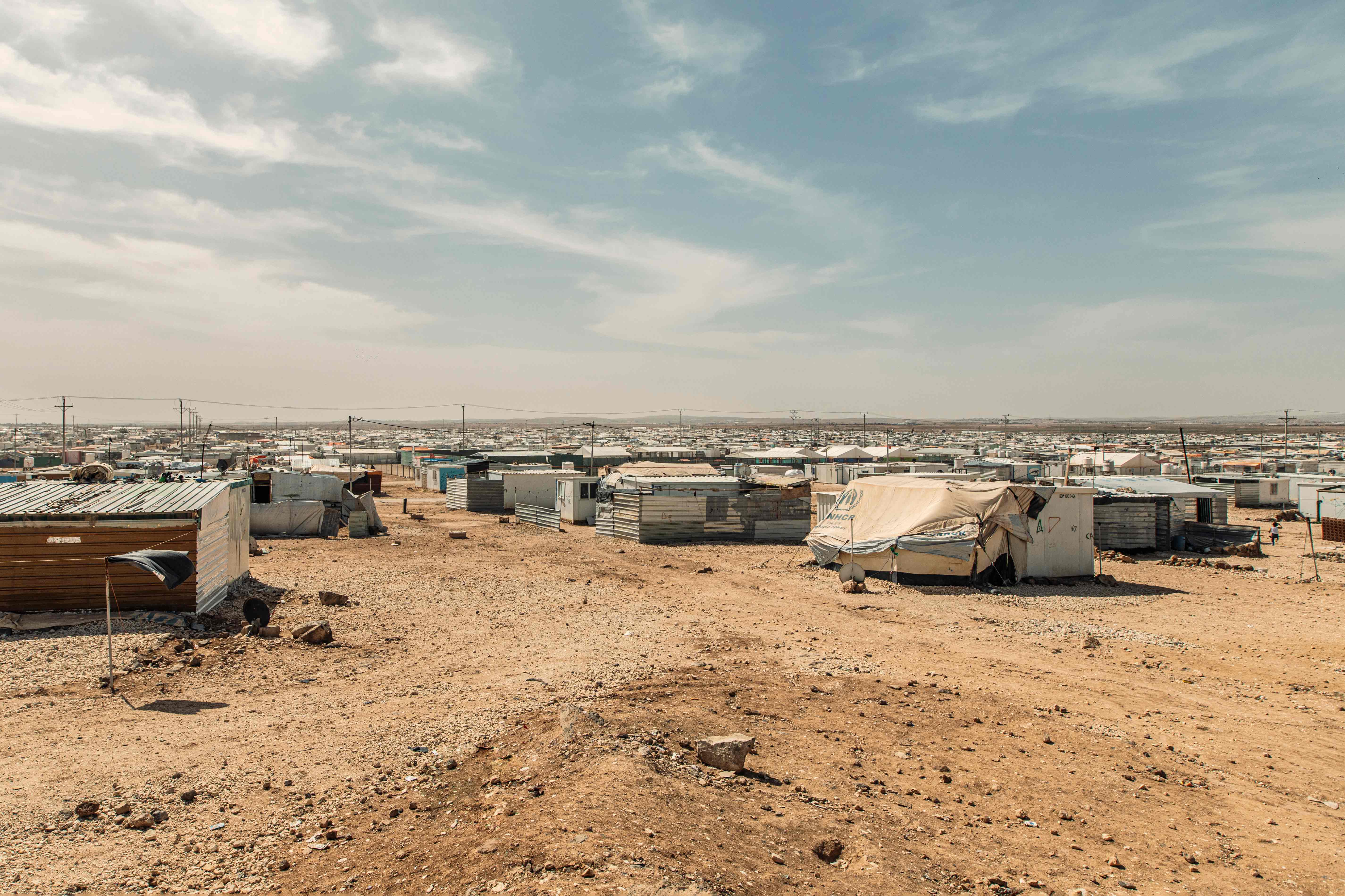
Photo by OSRSG CAAC/Paddy Dowling (Syria)
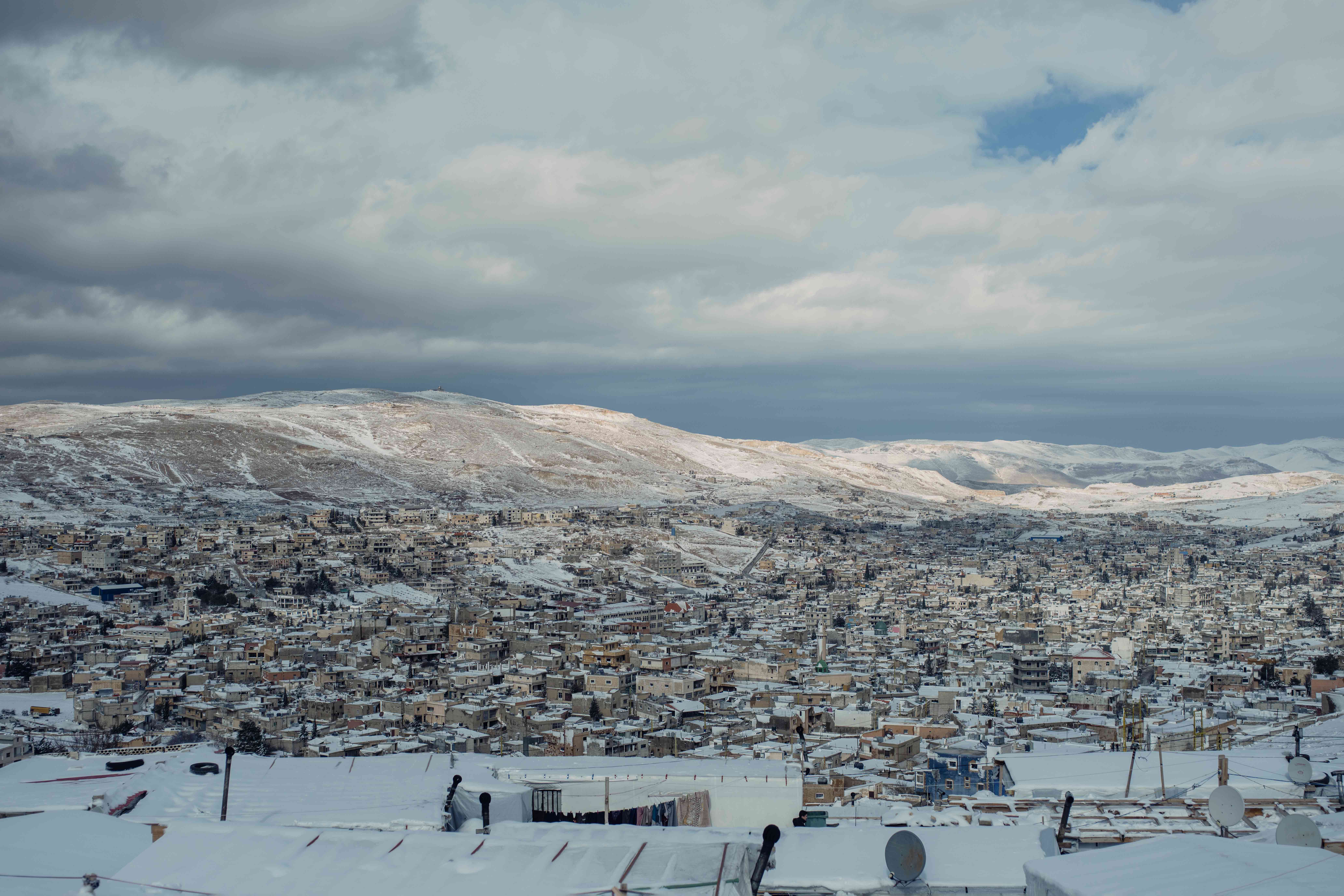
Photo by OSRSG CAAC/Paddy Dowling (Syria)

